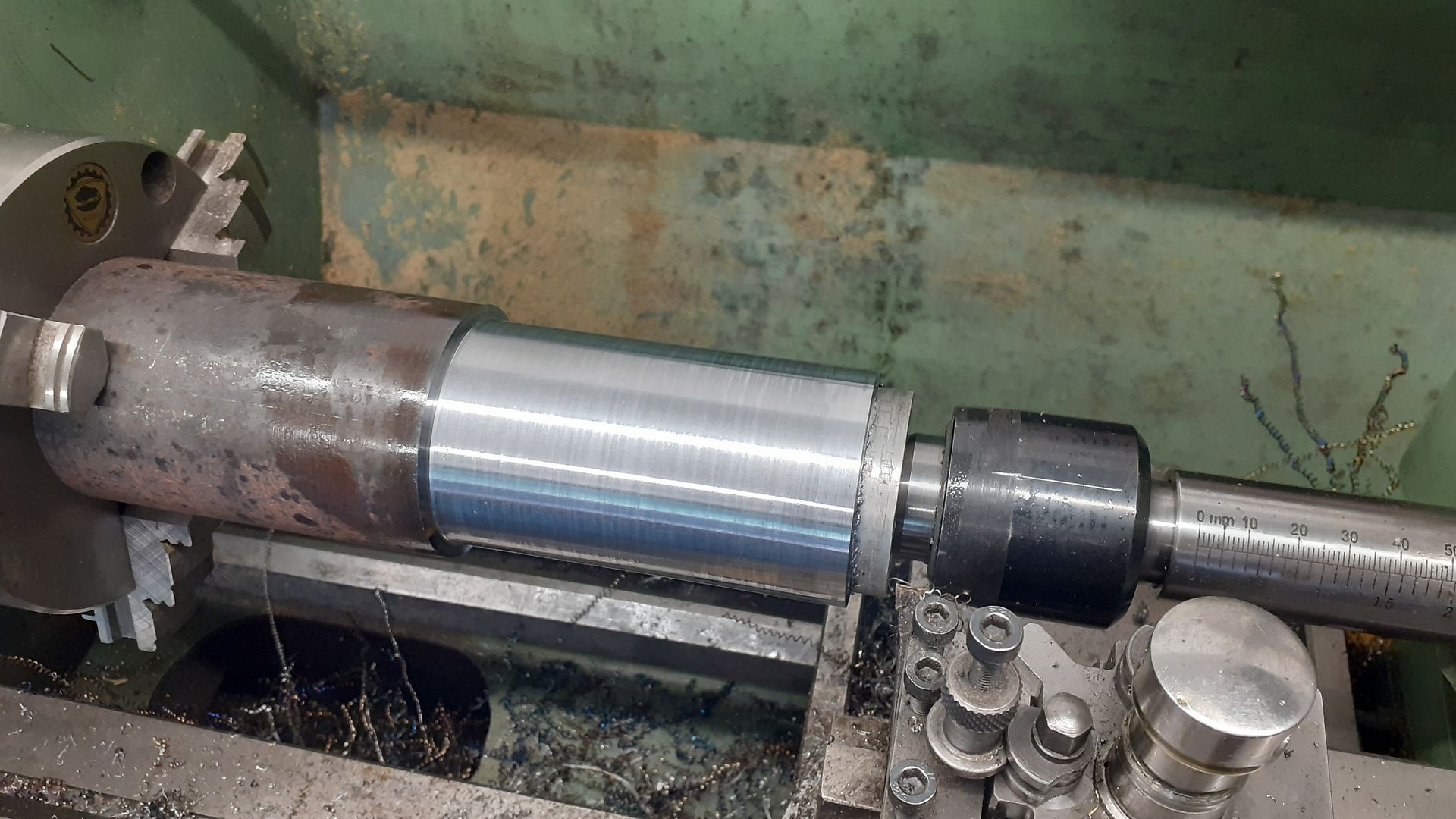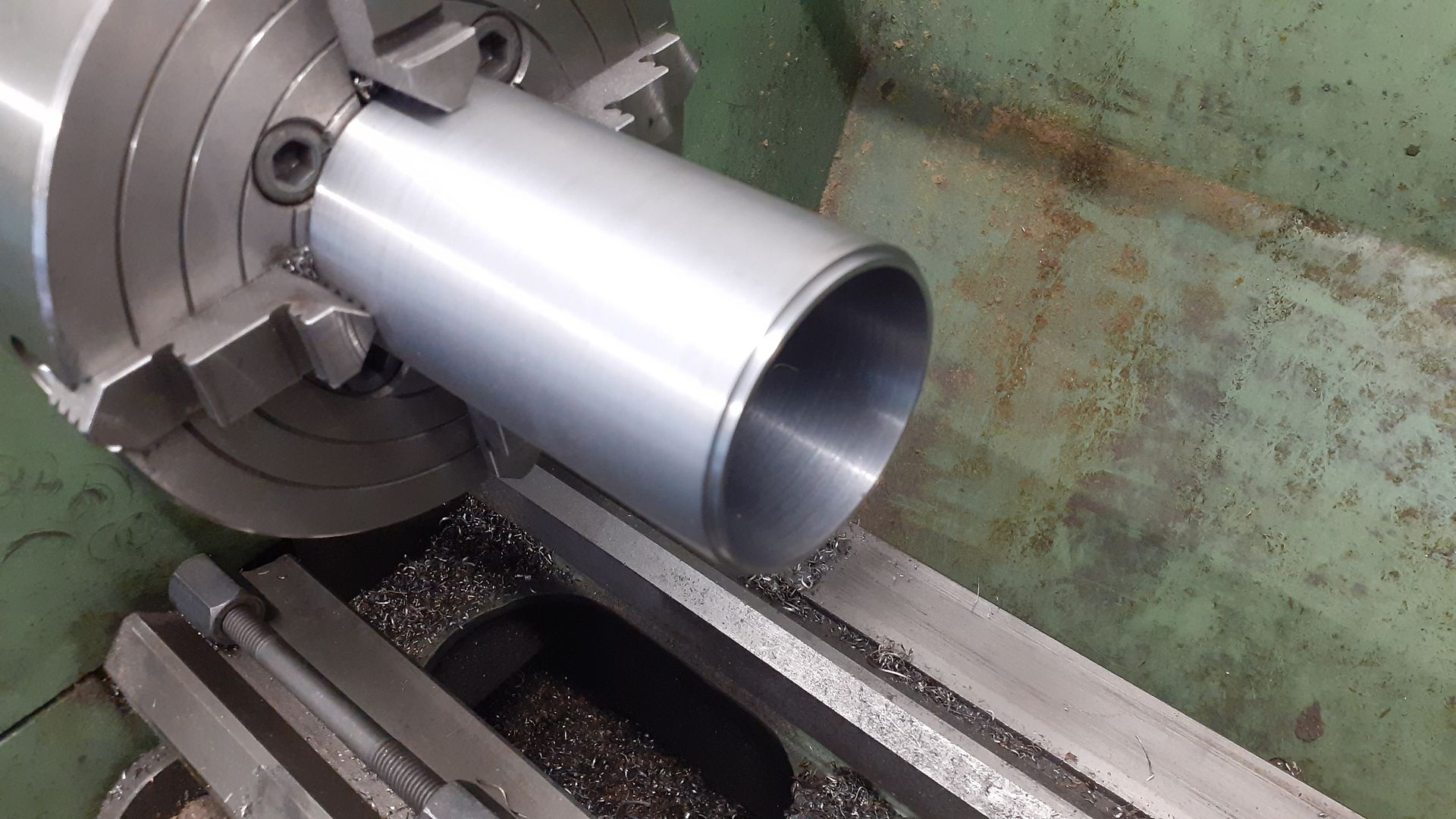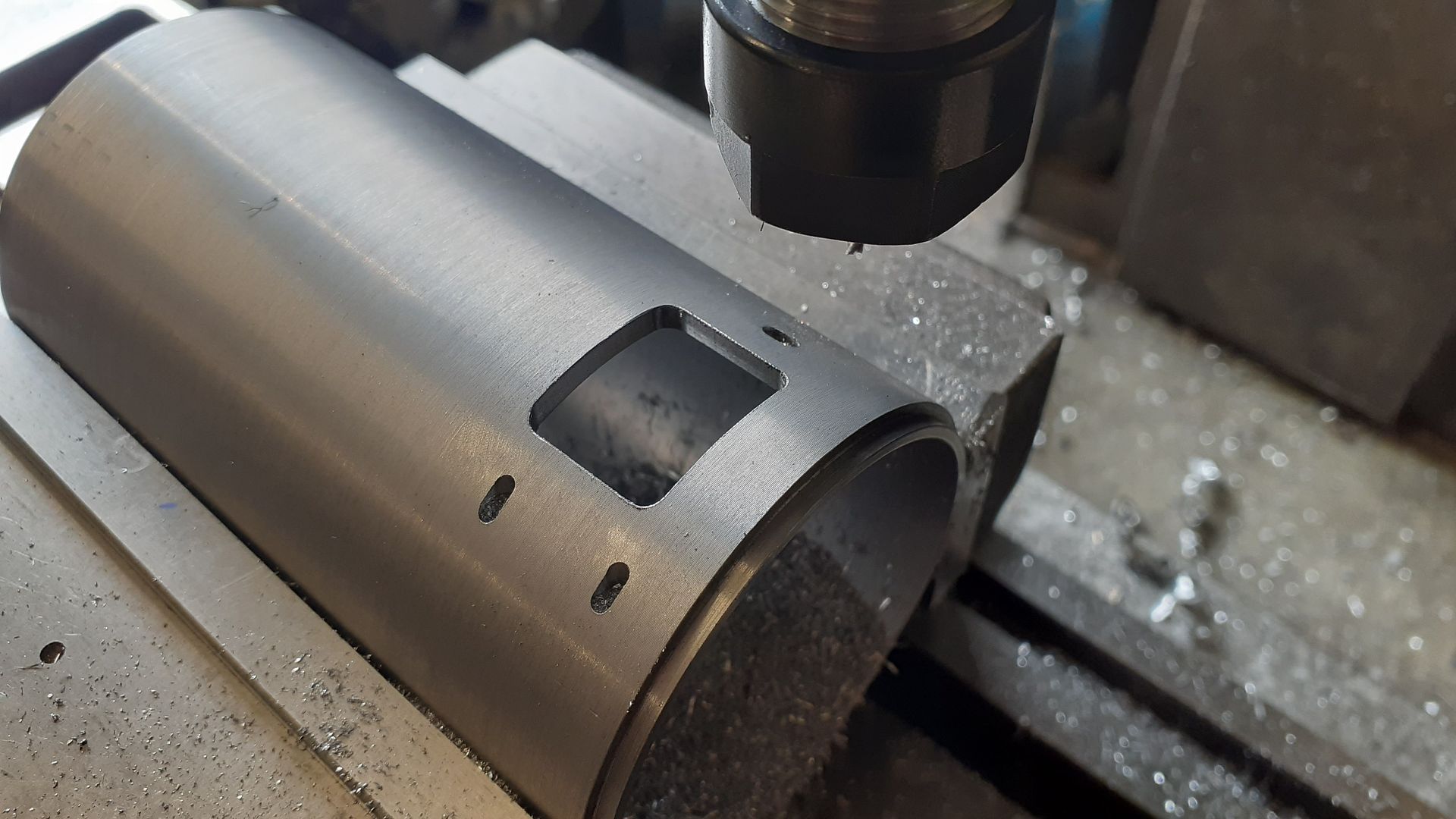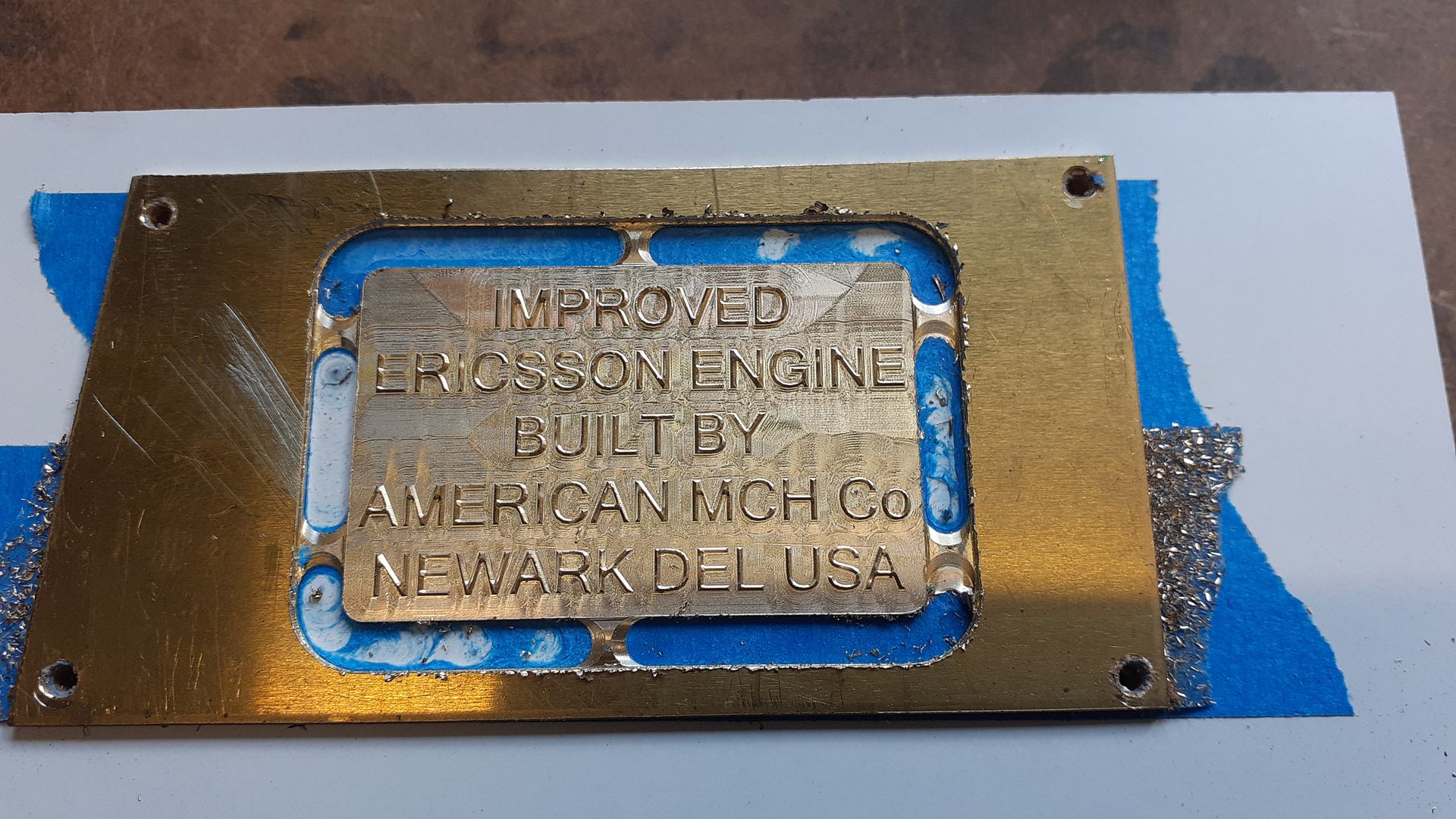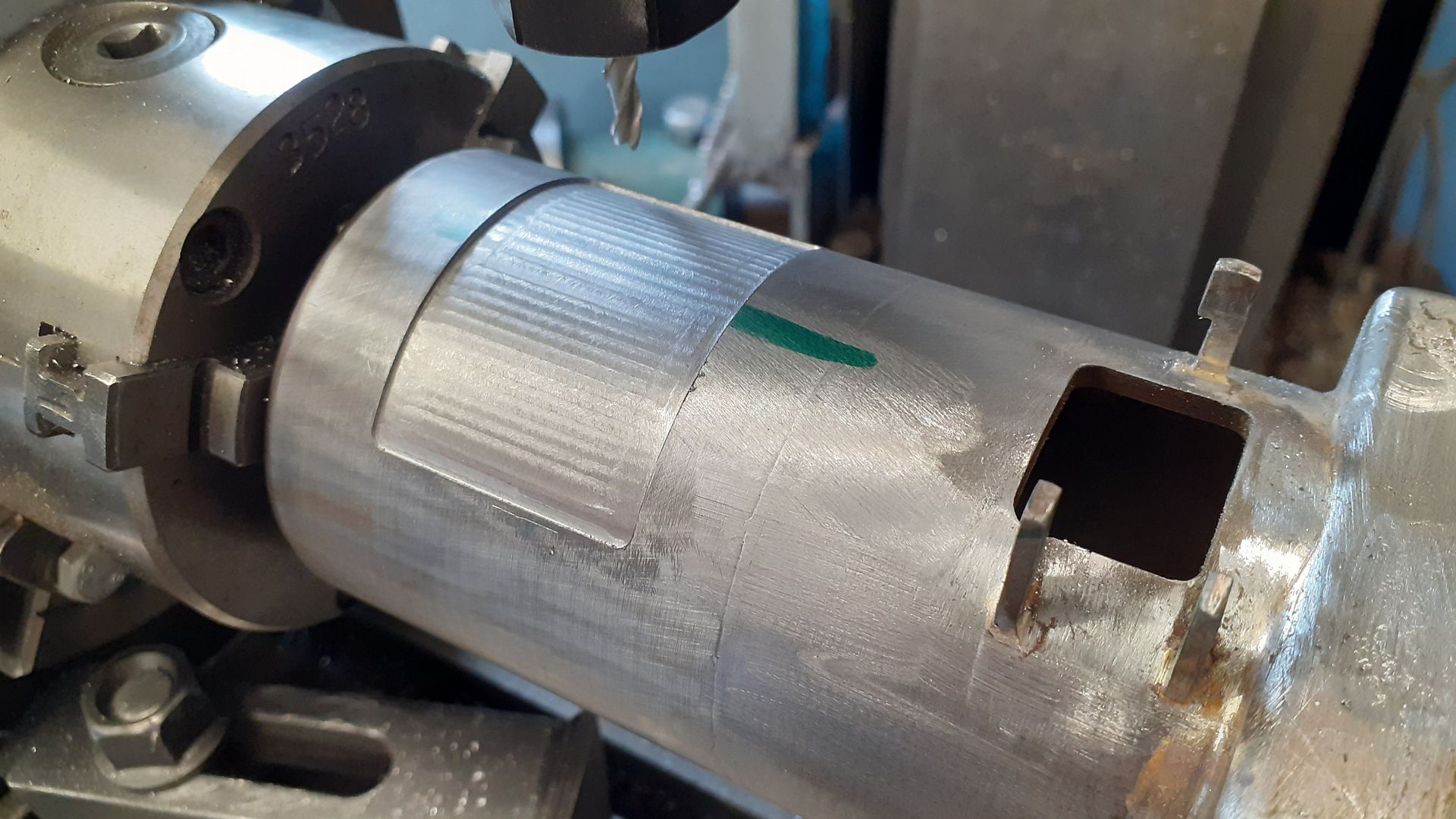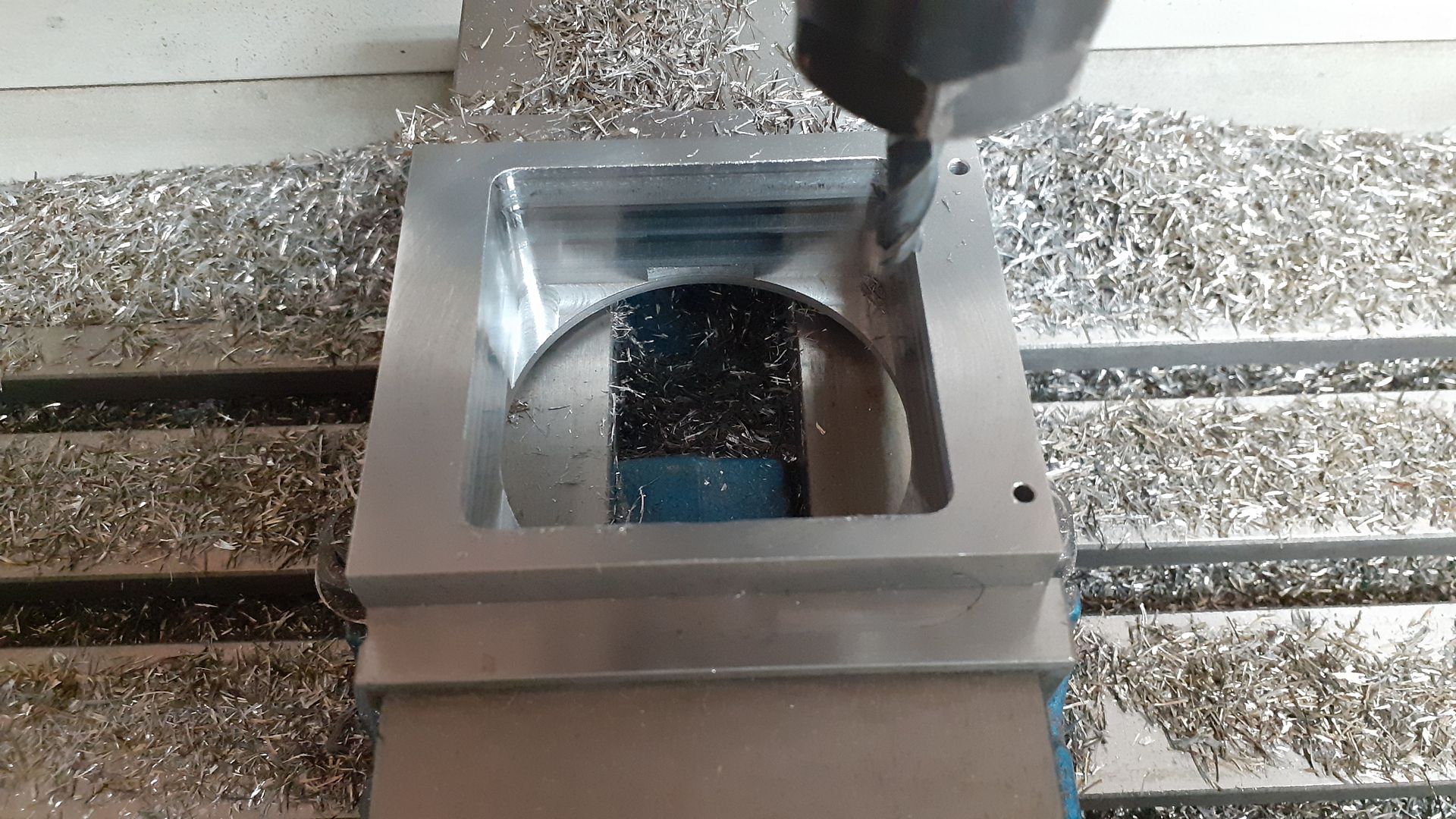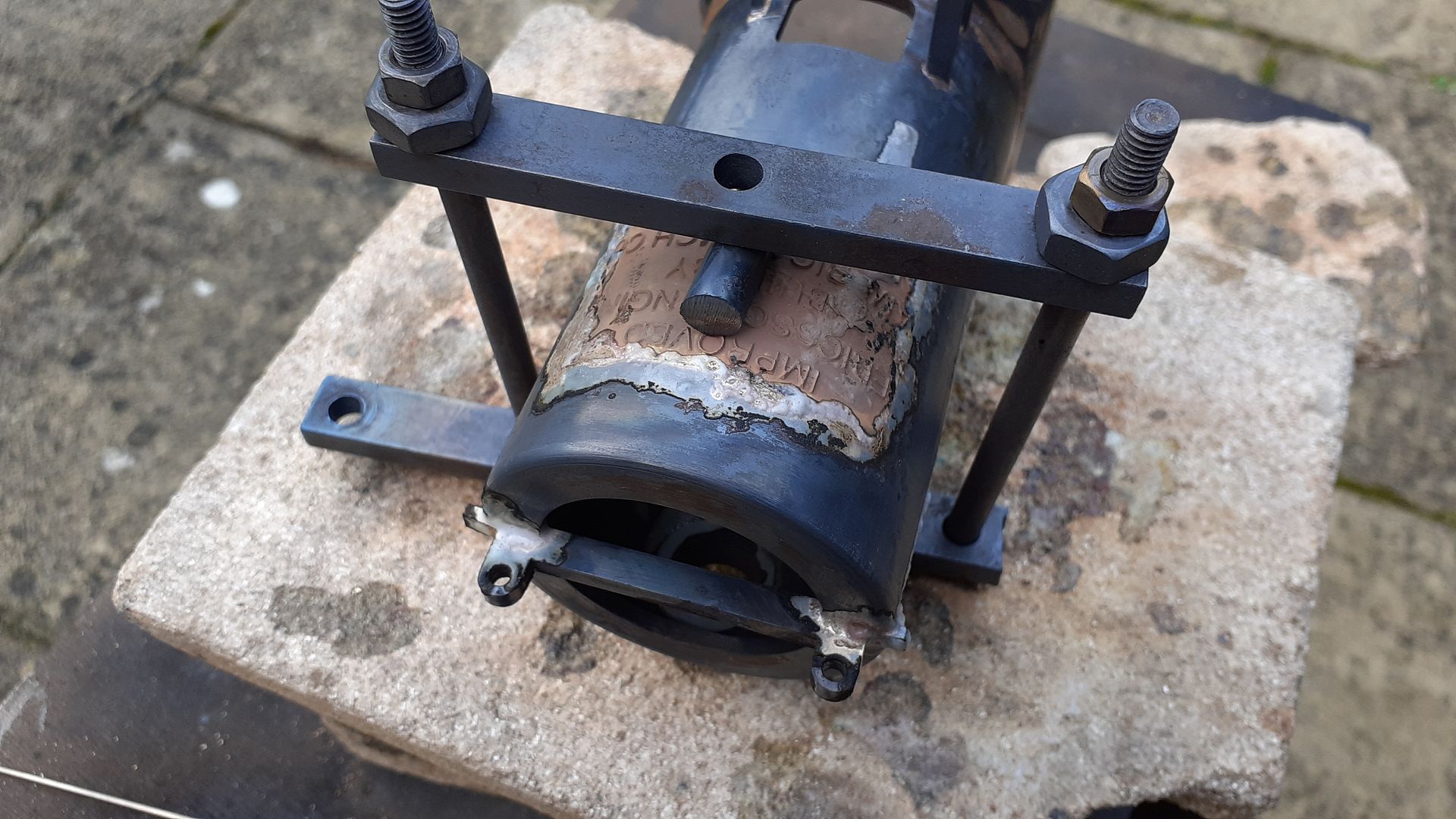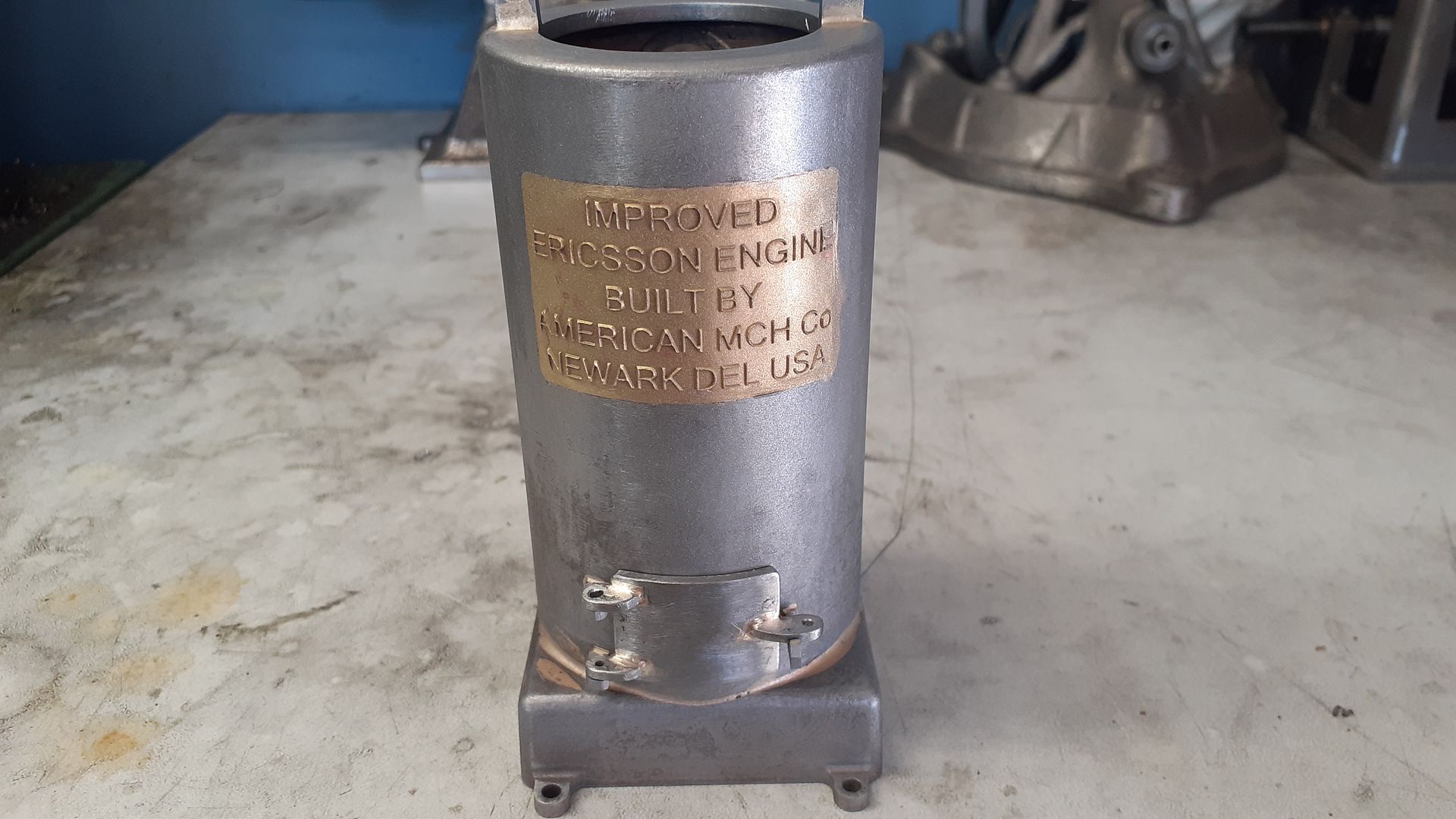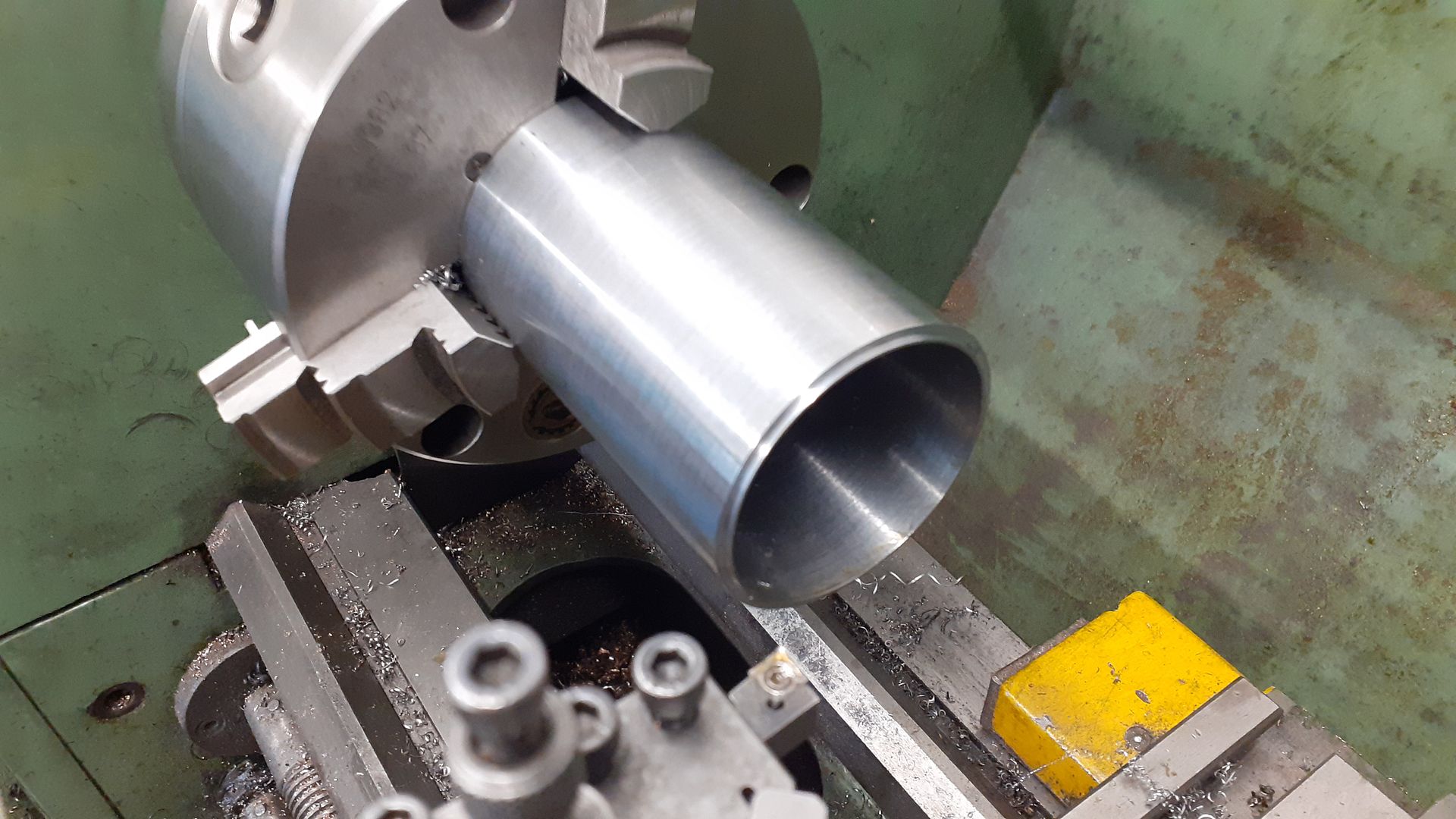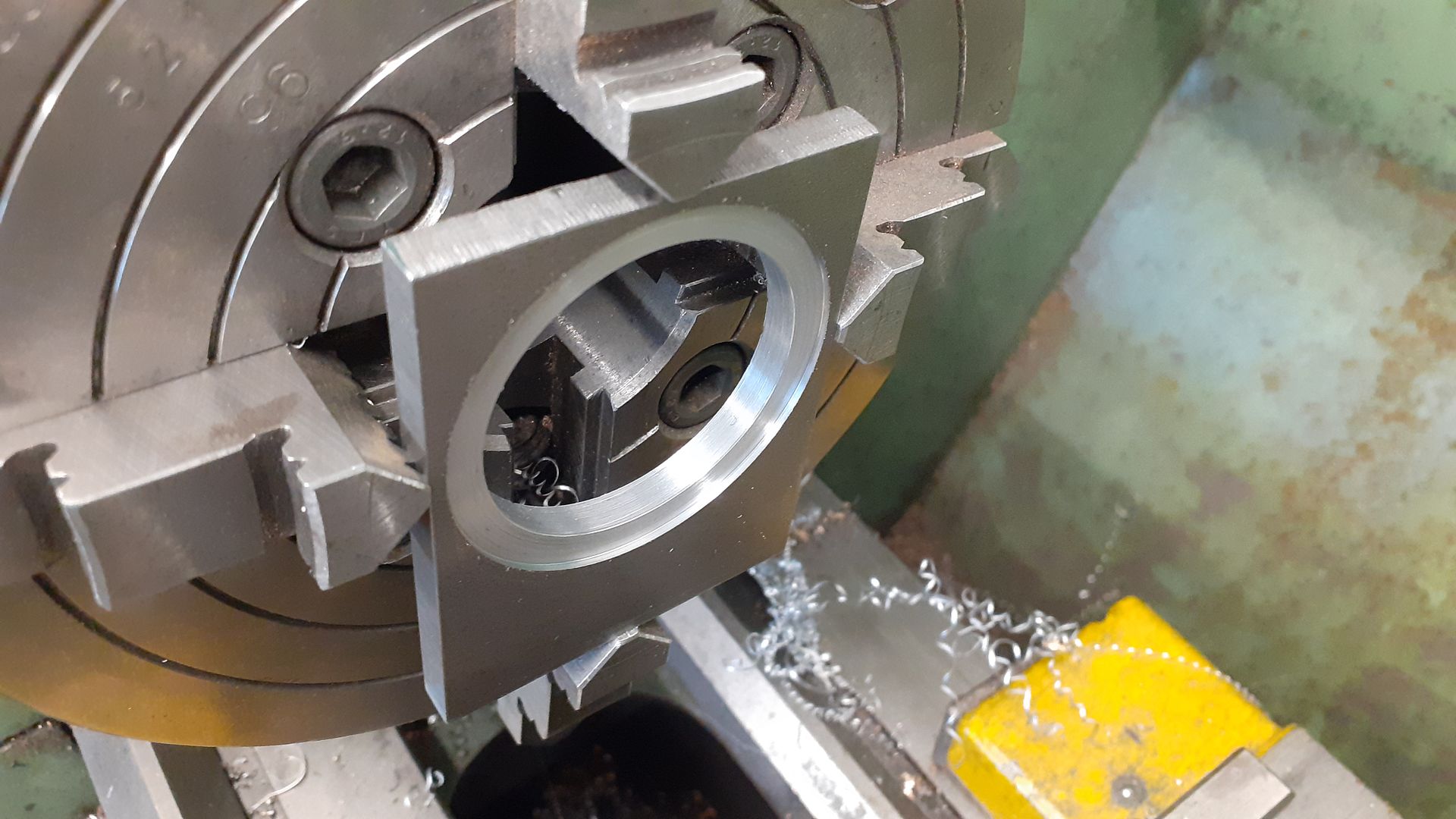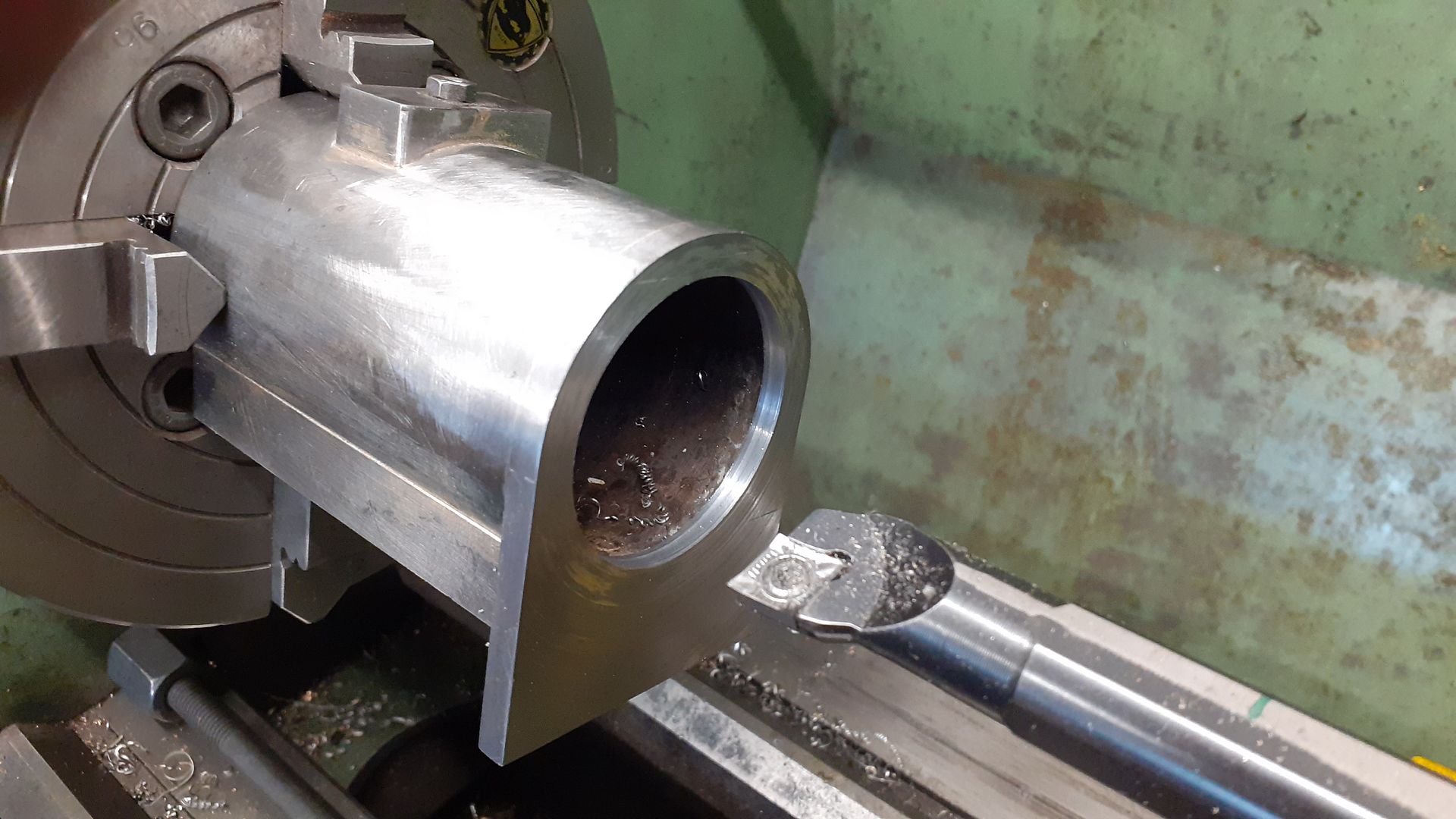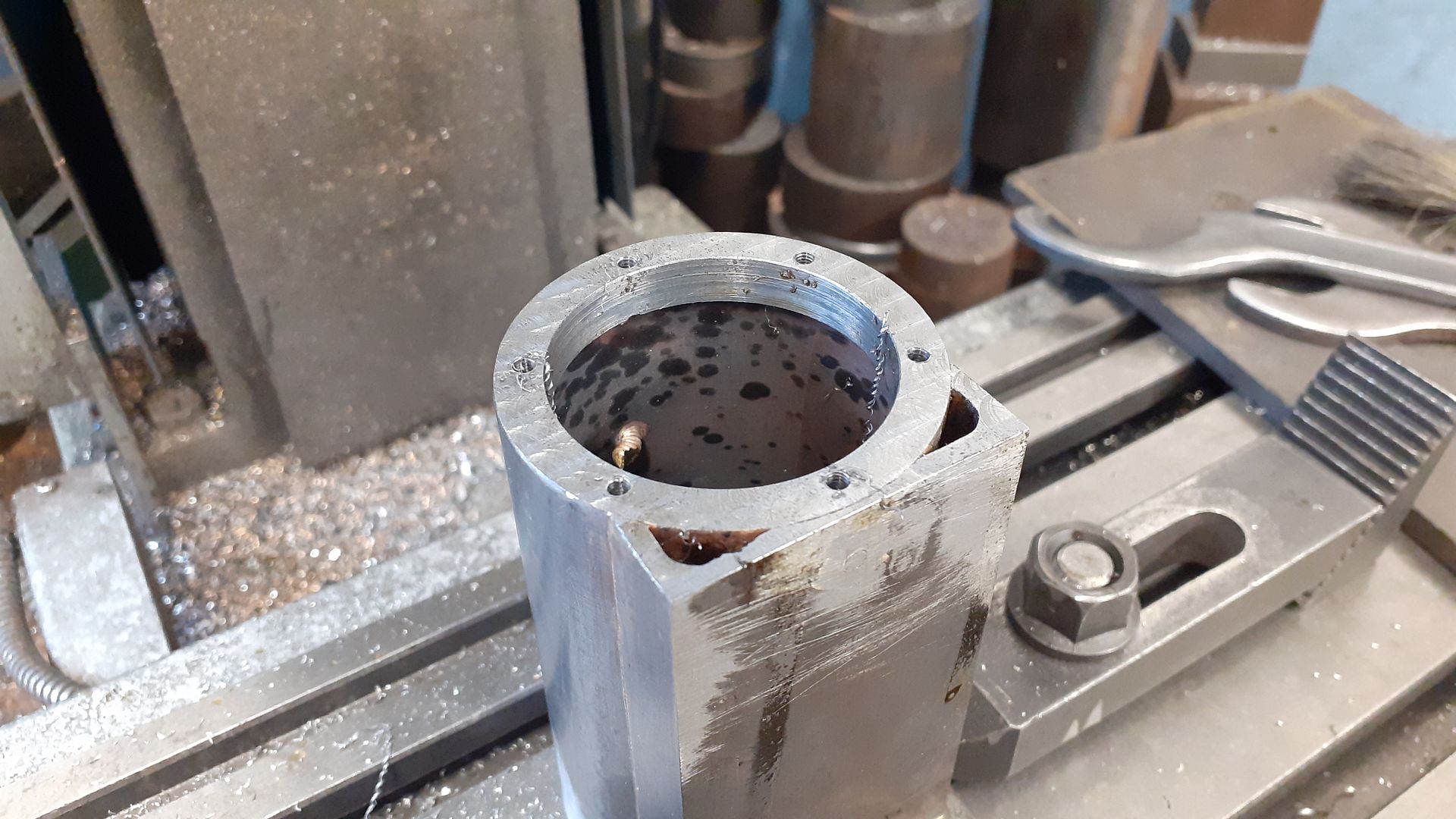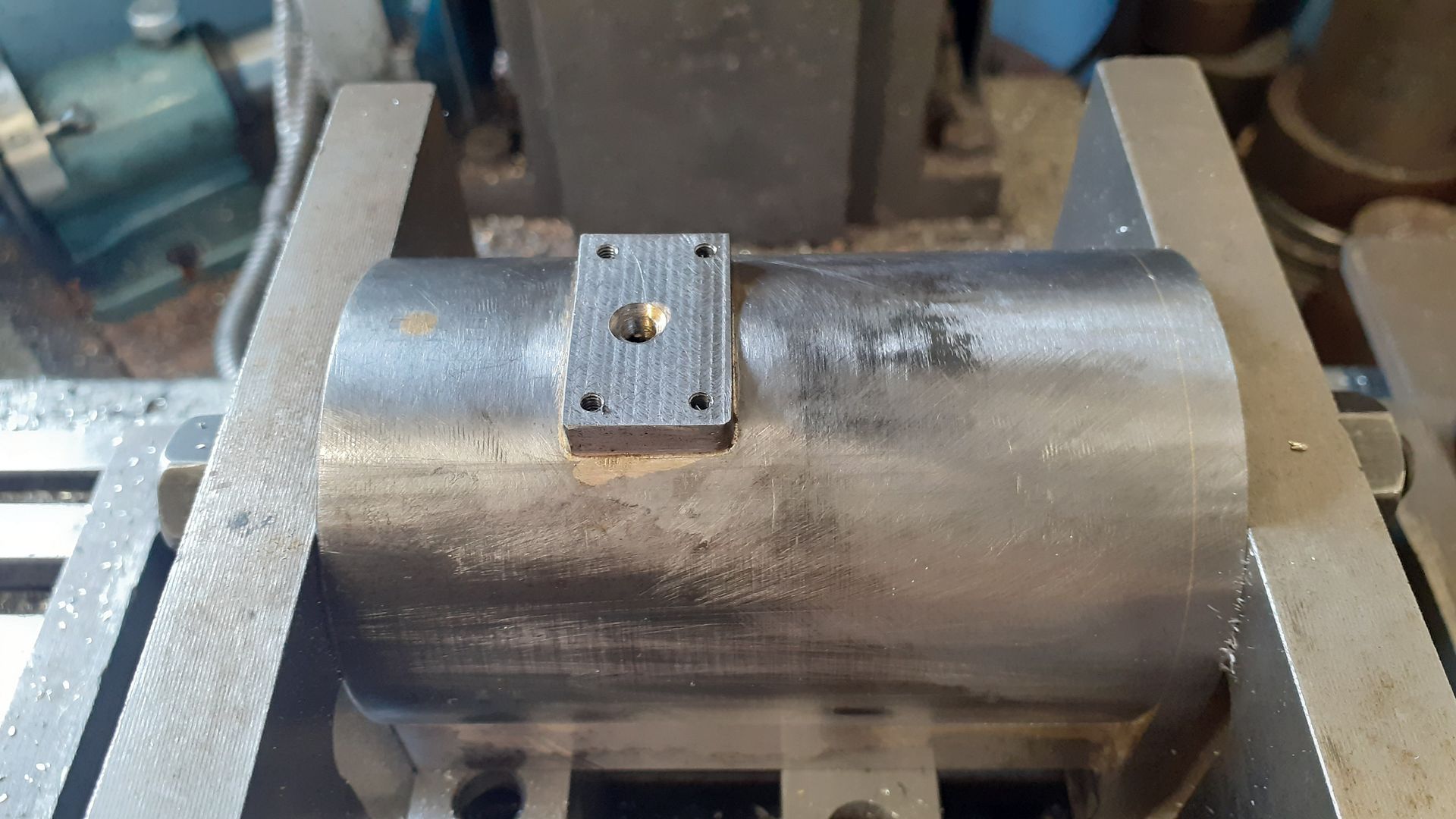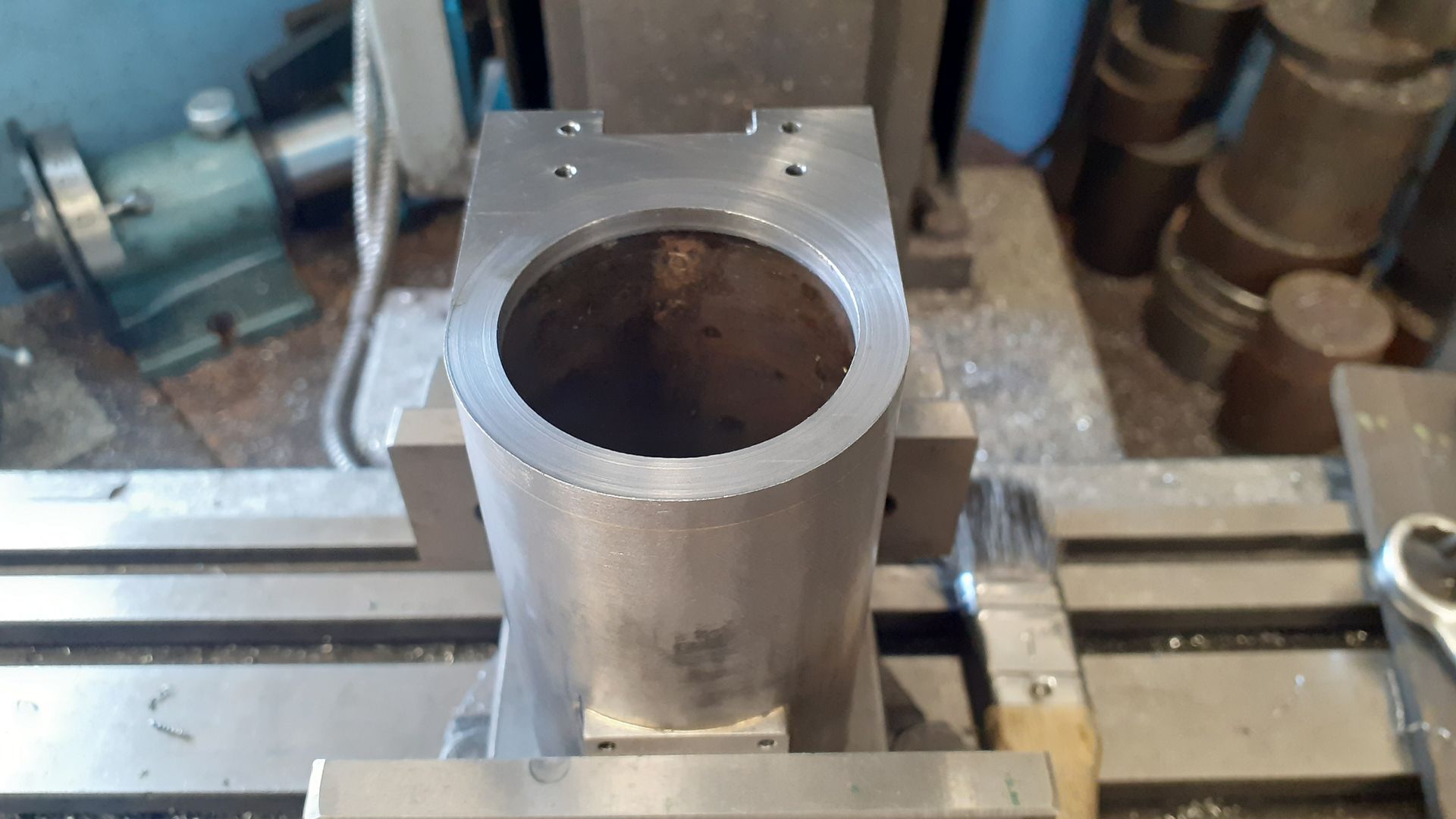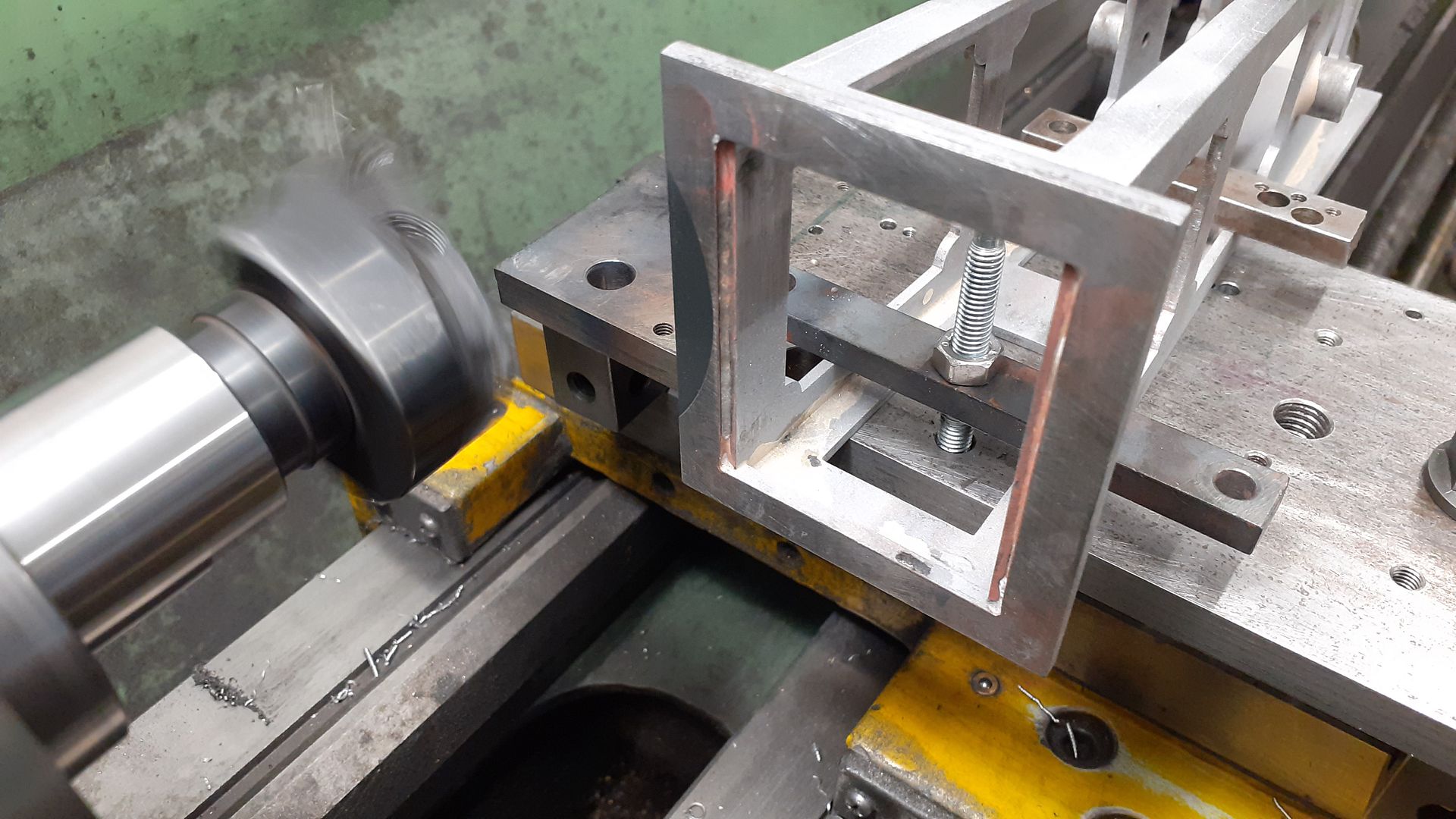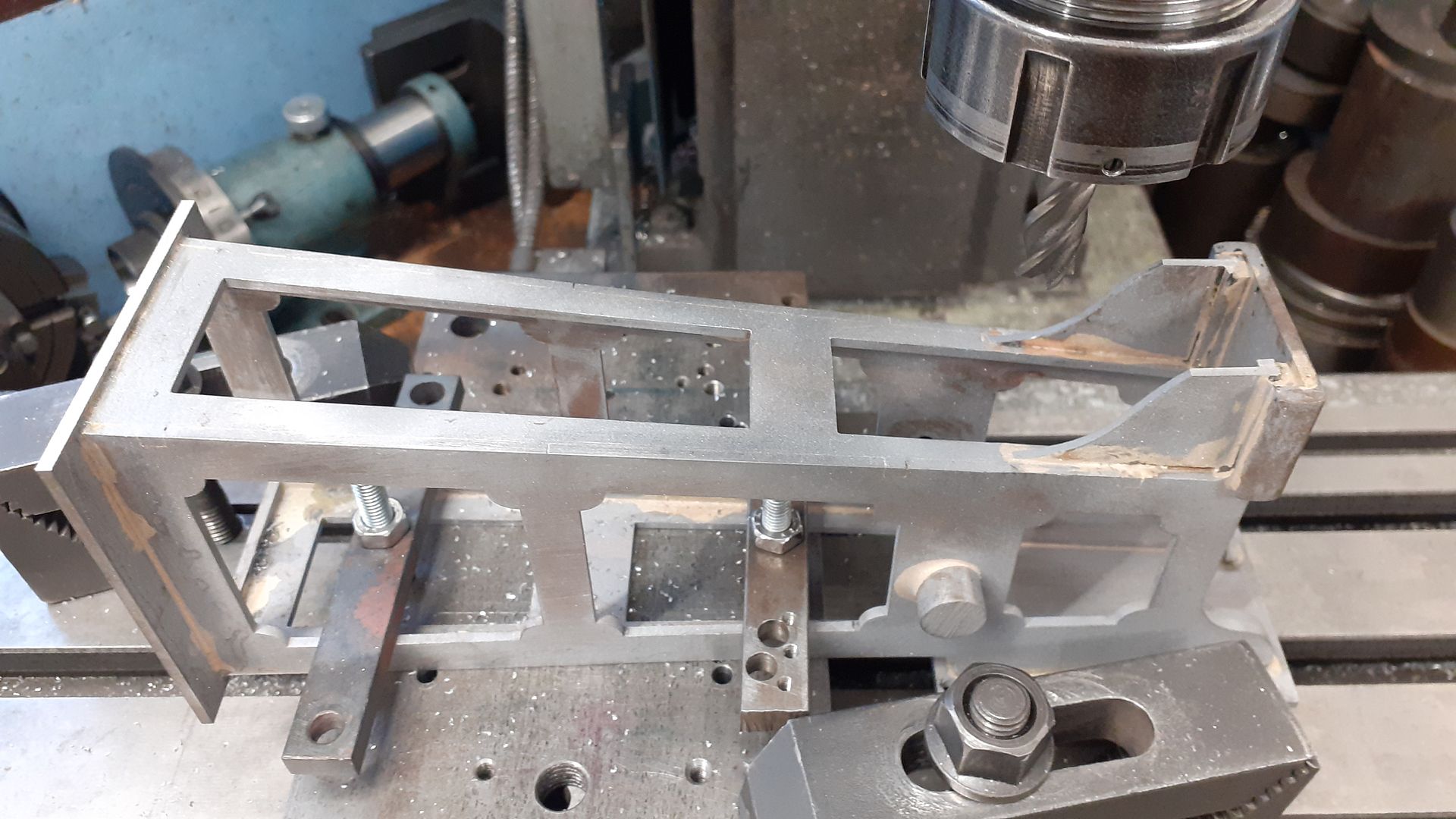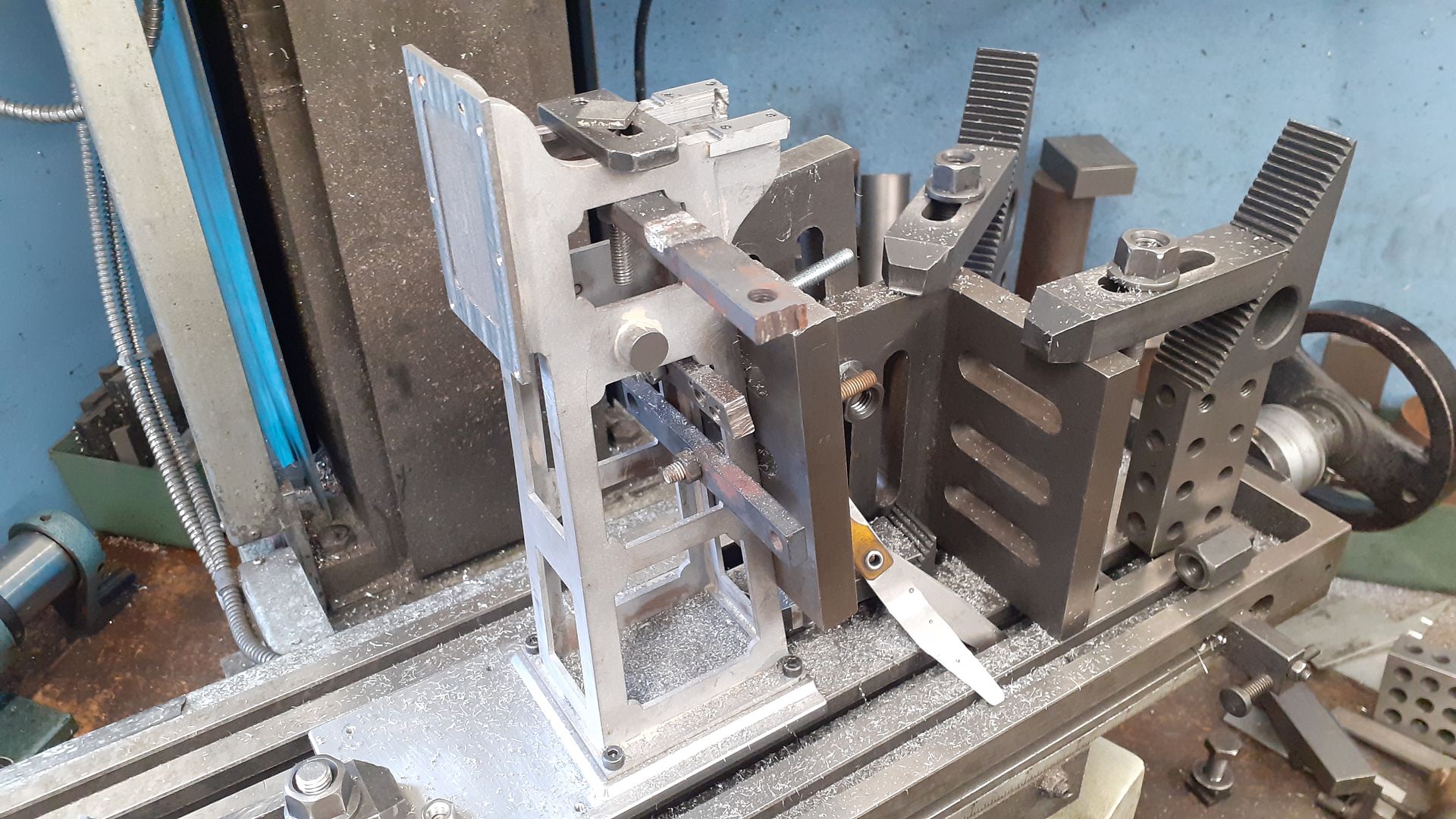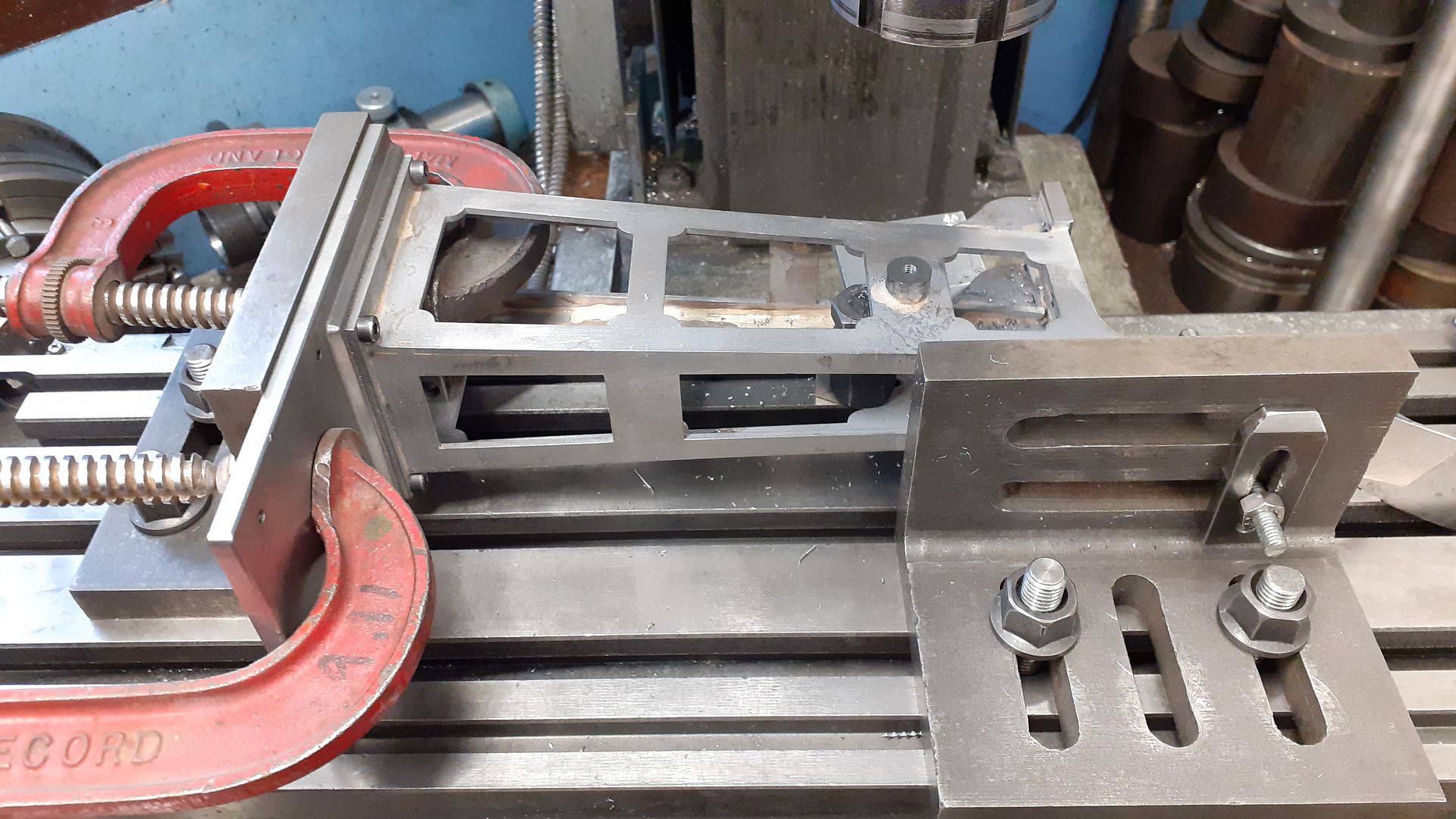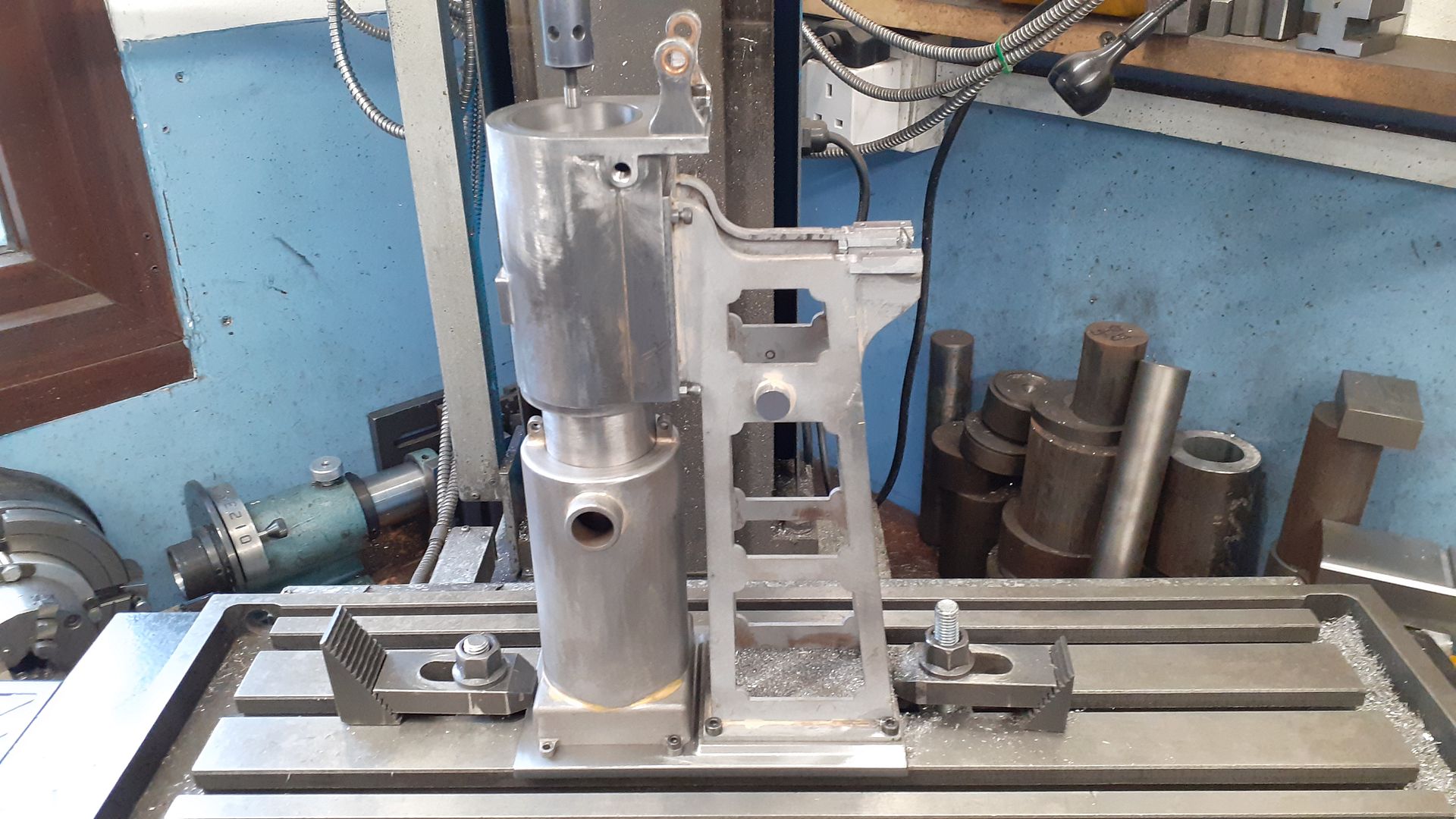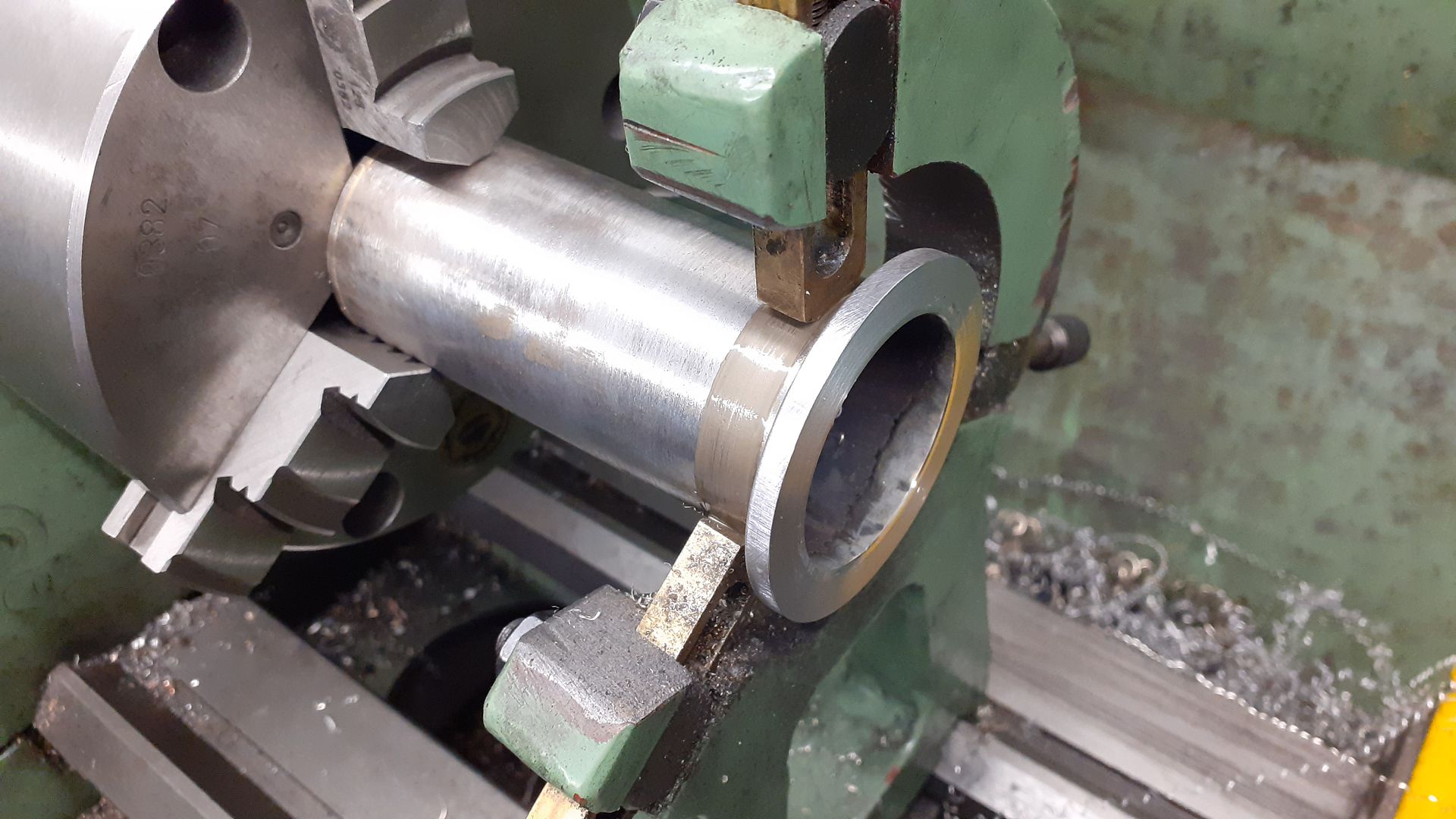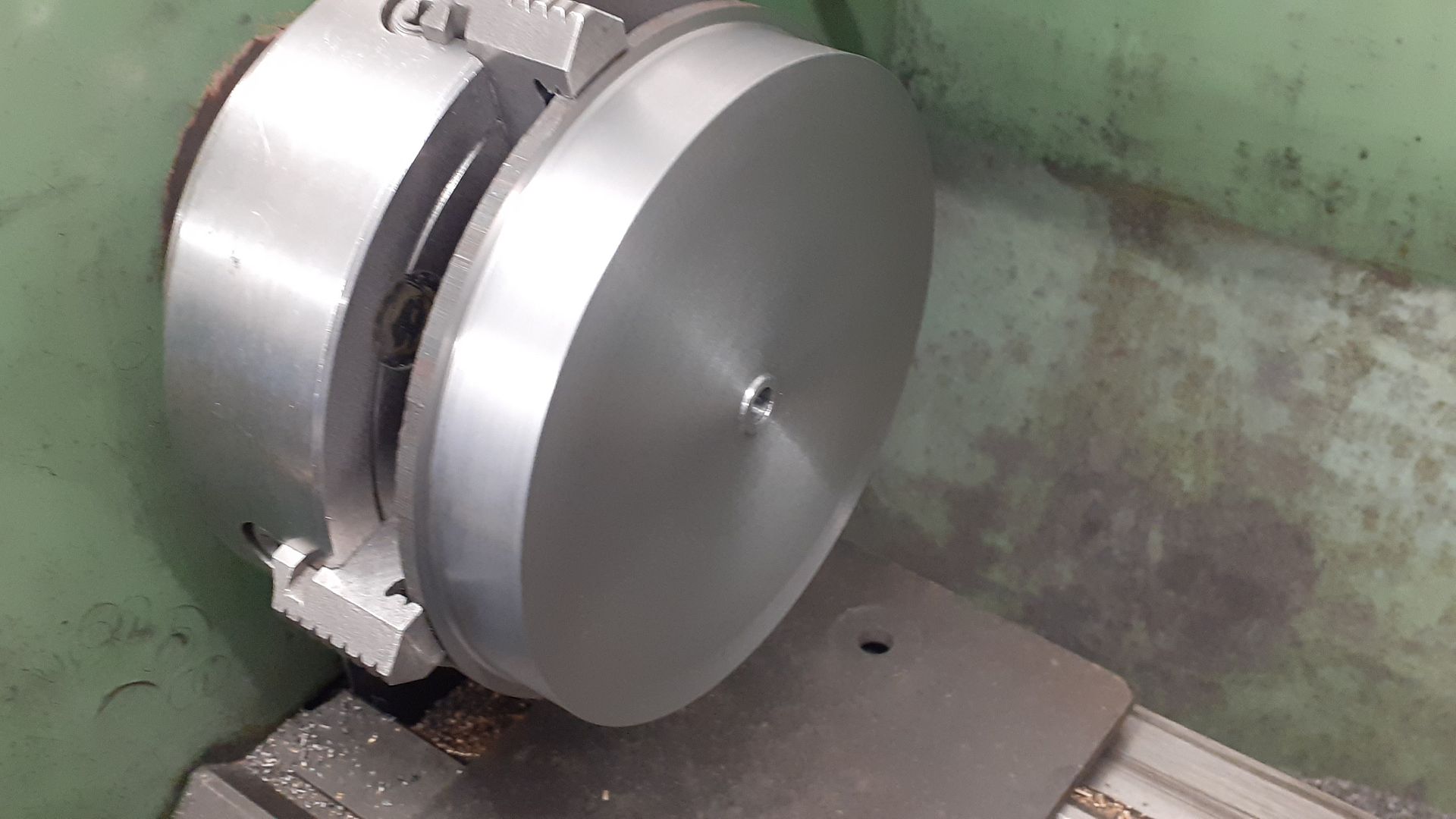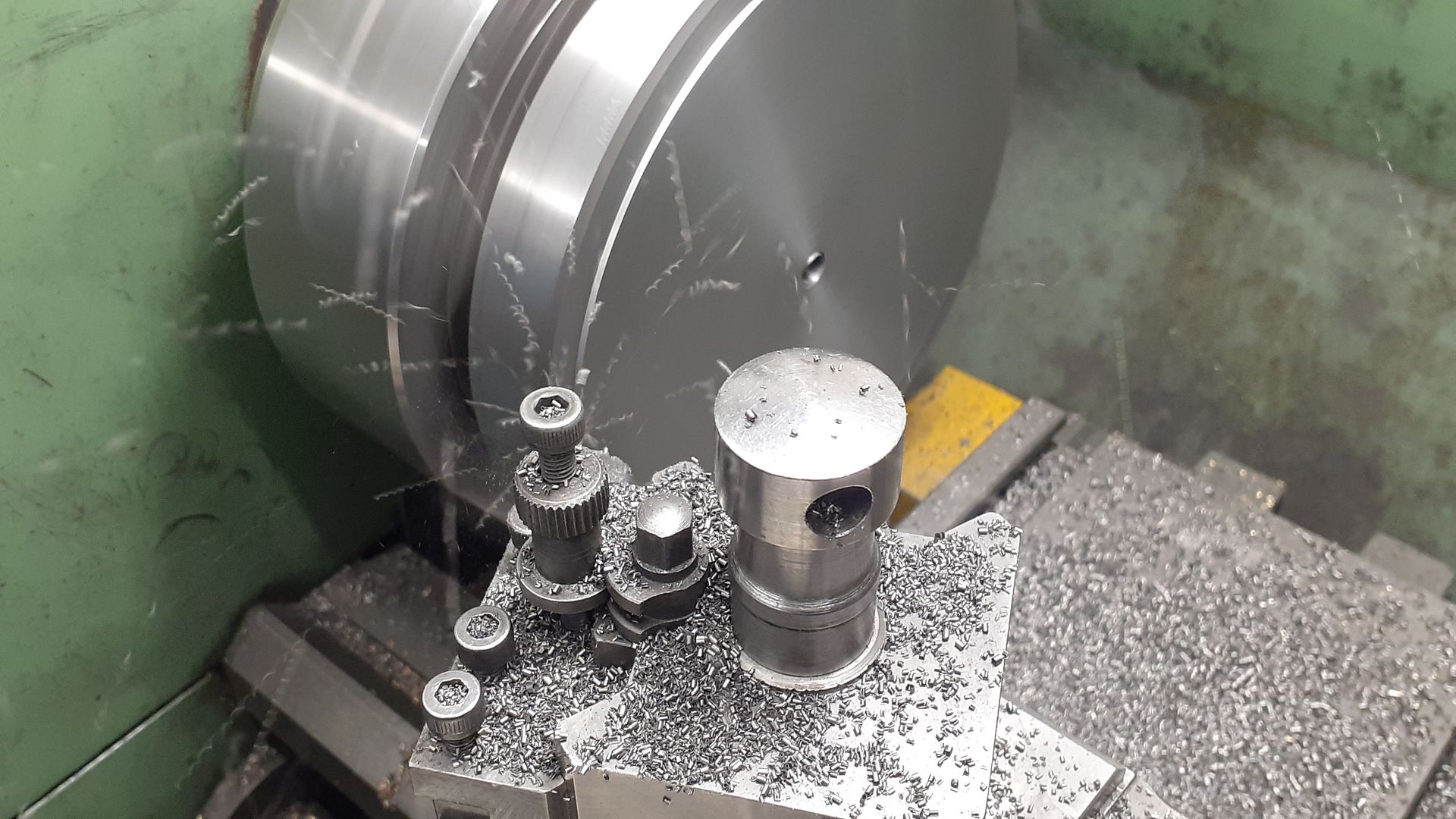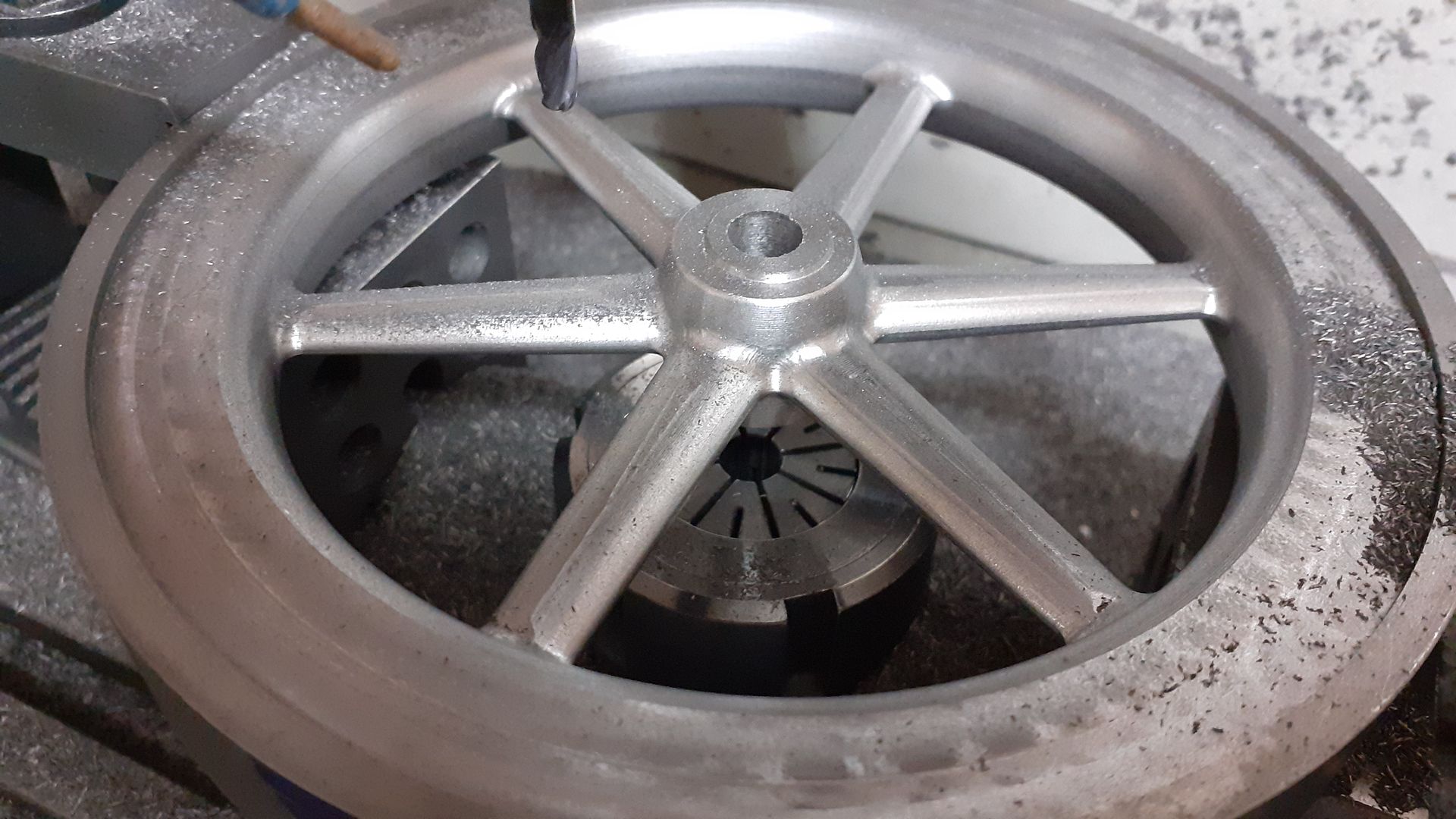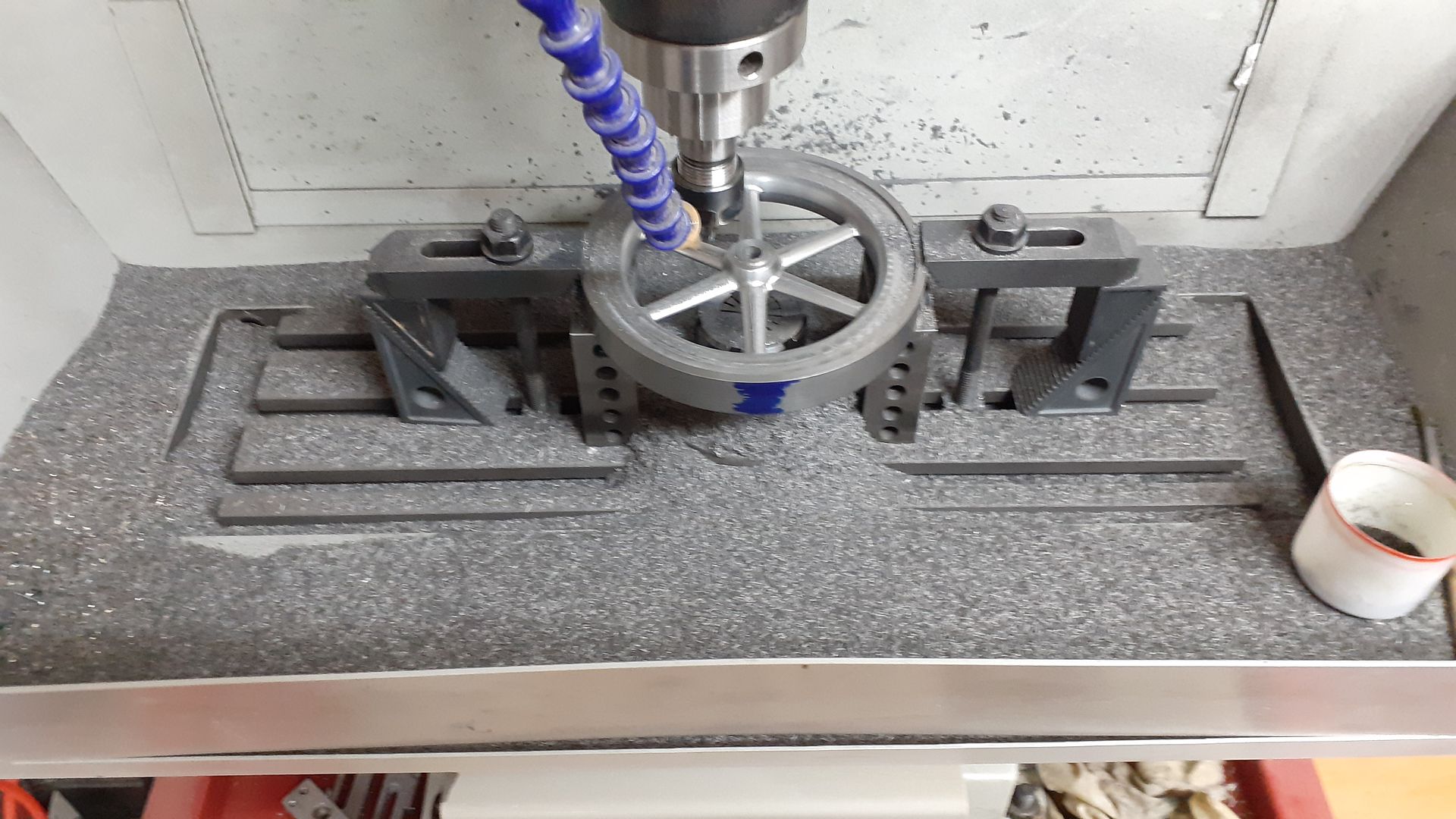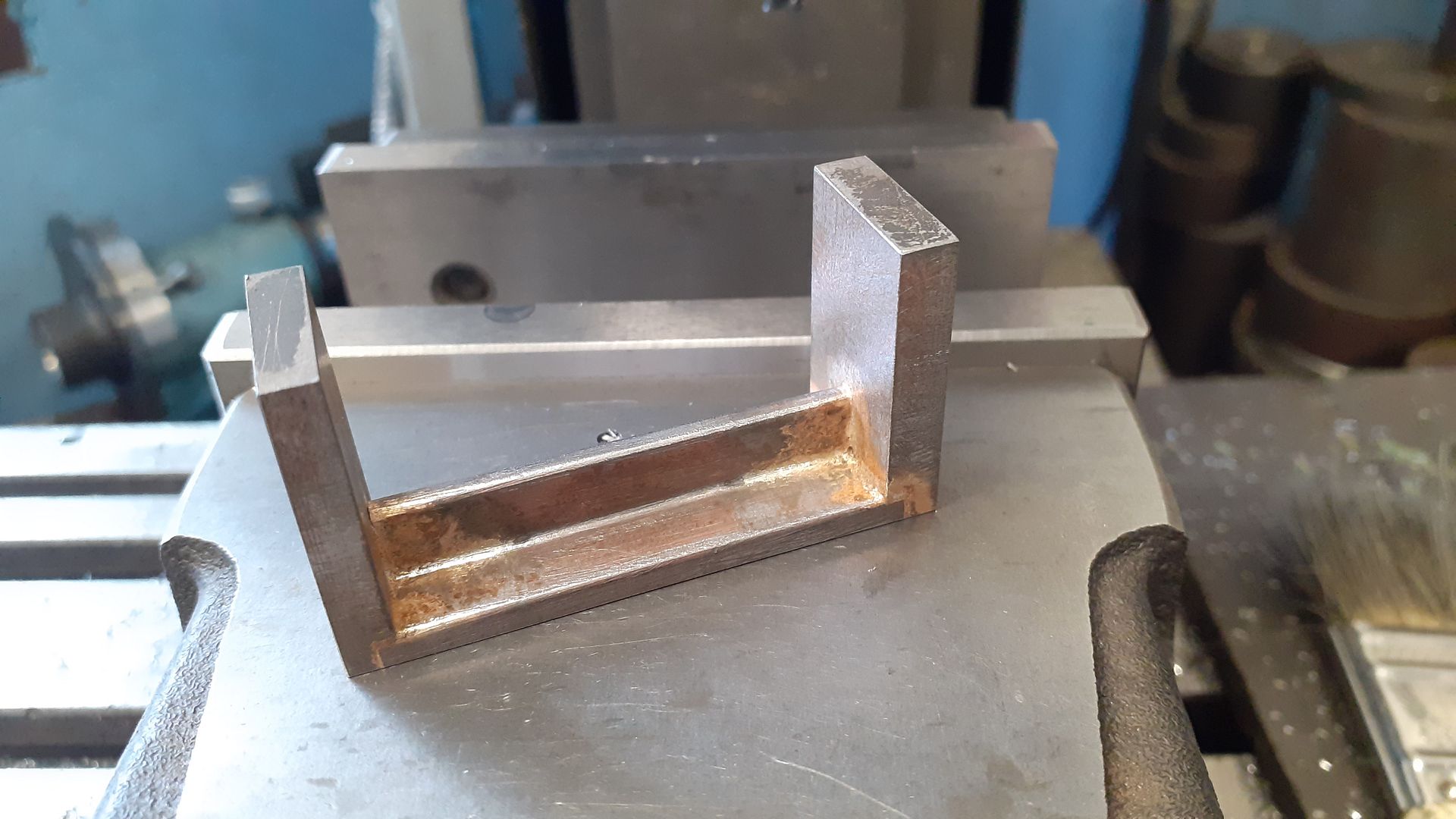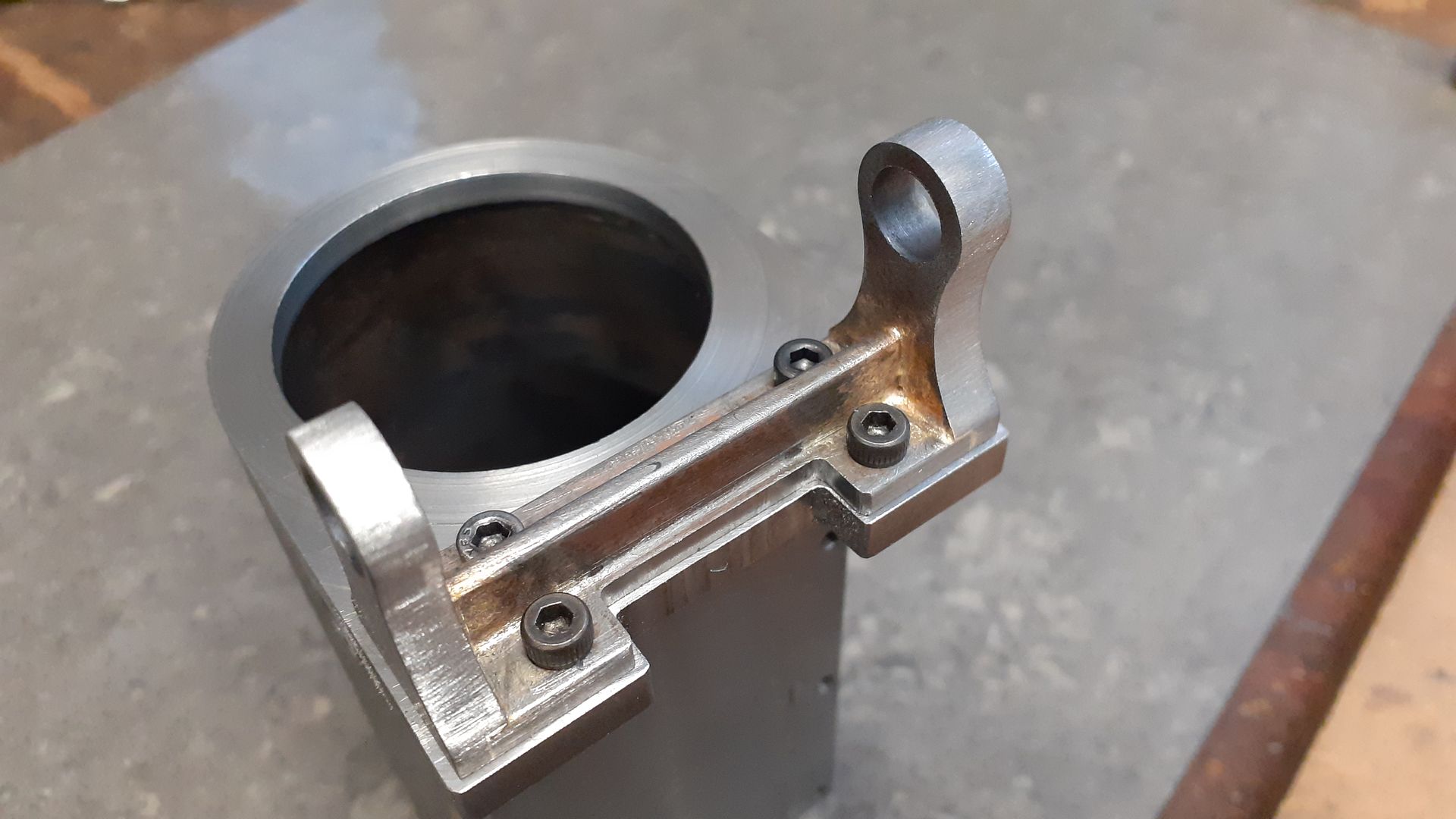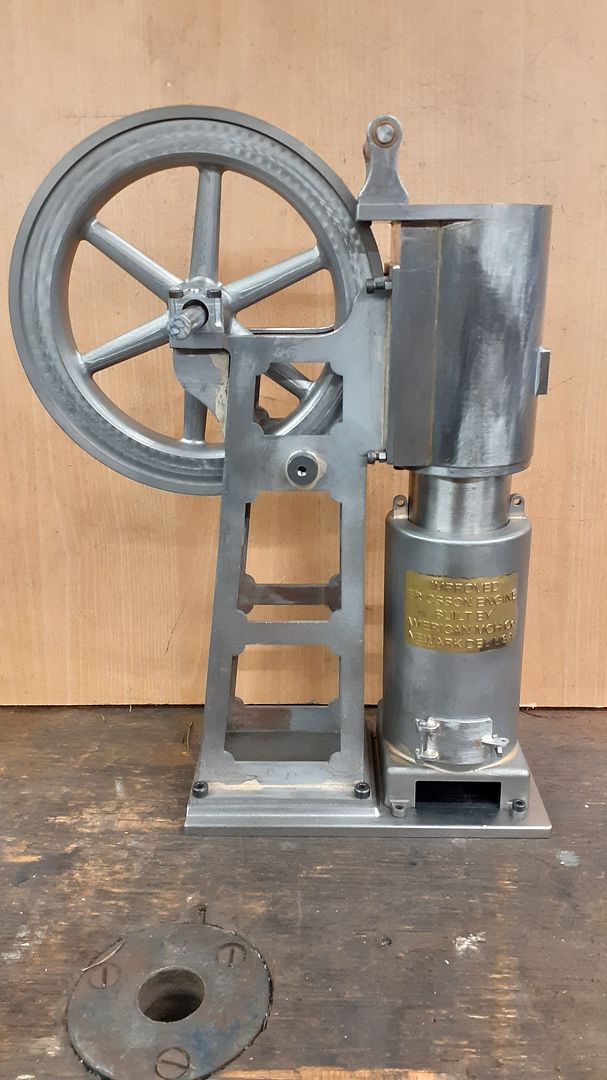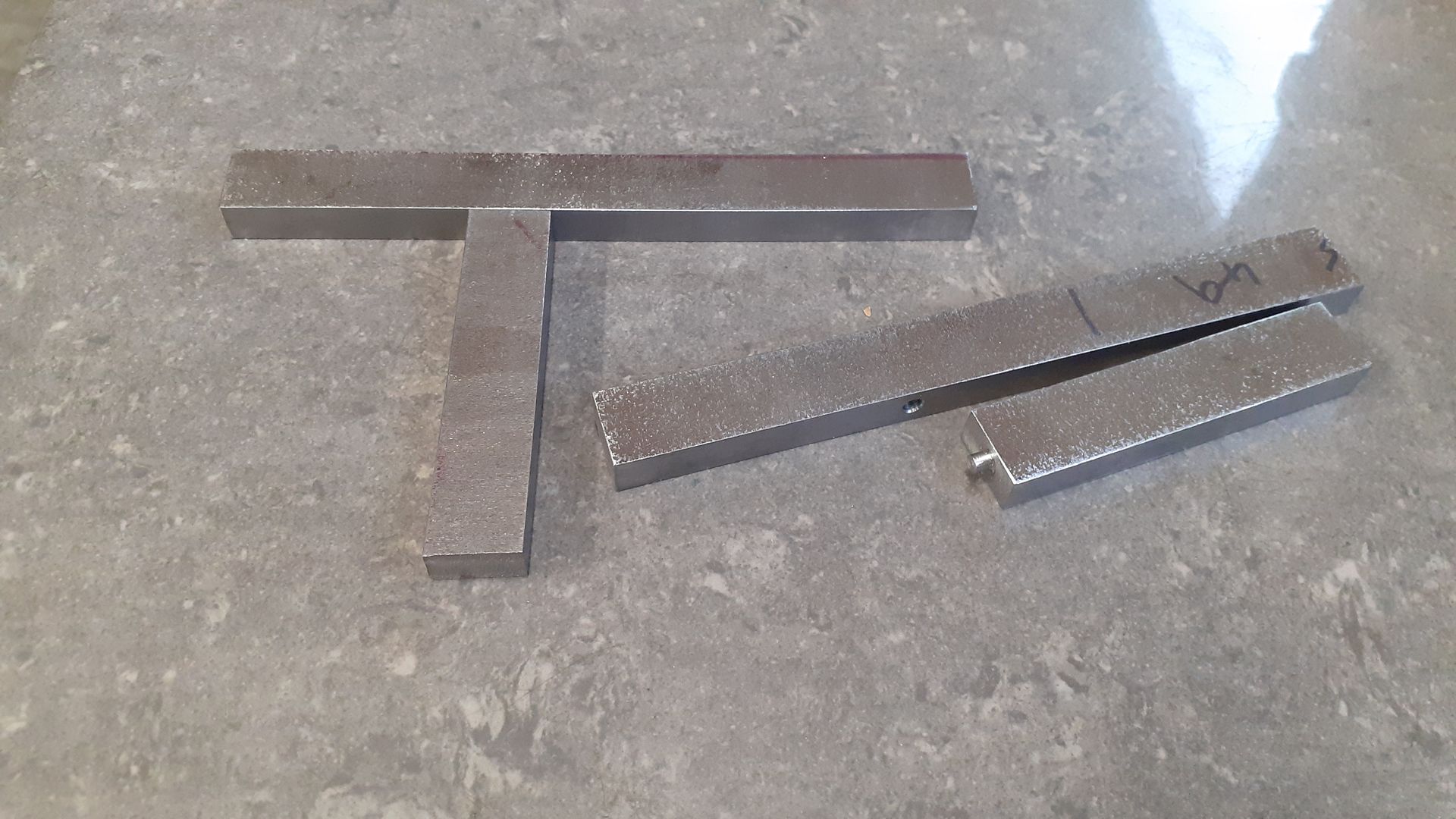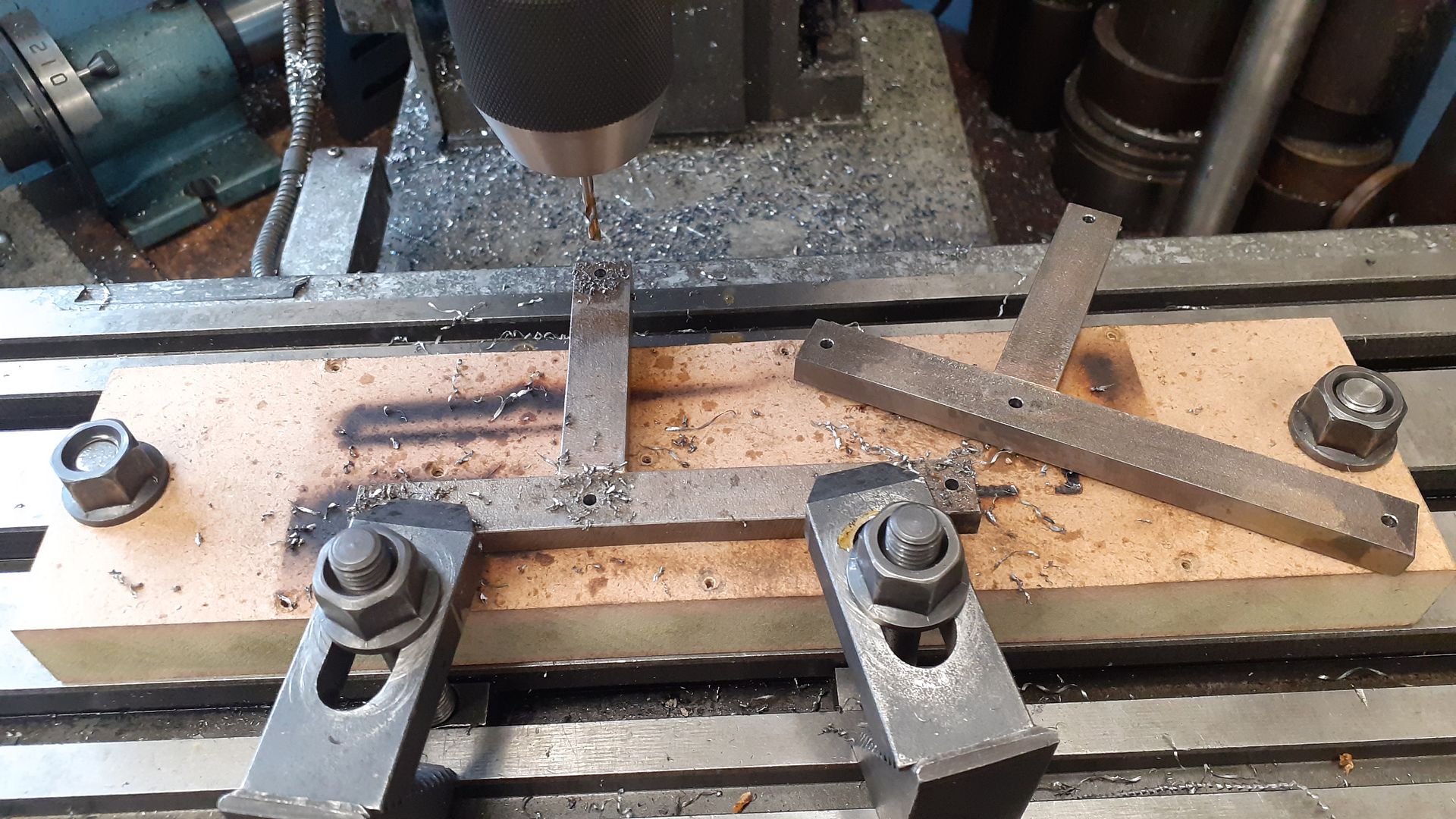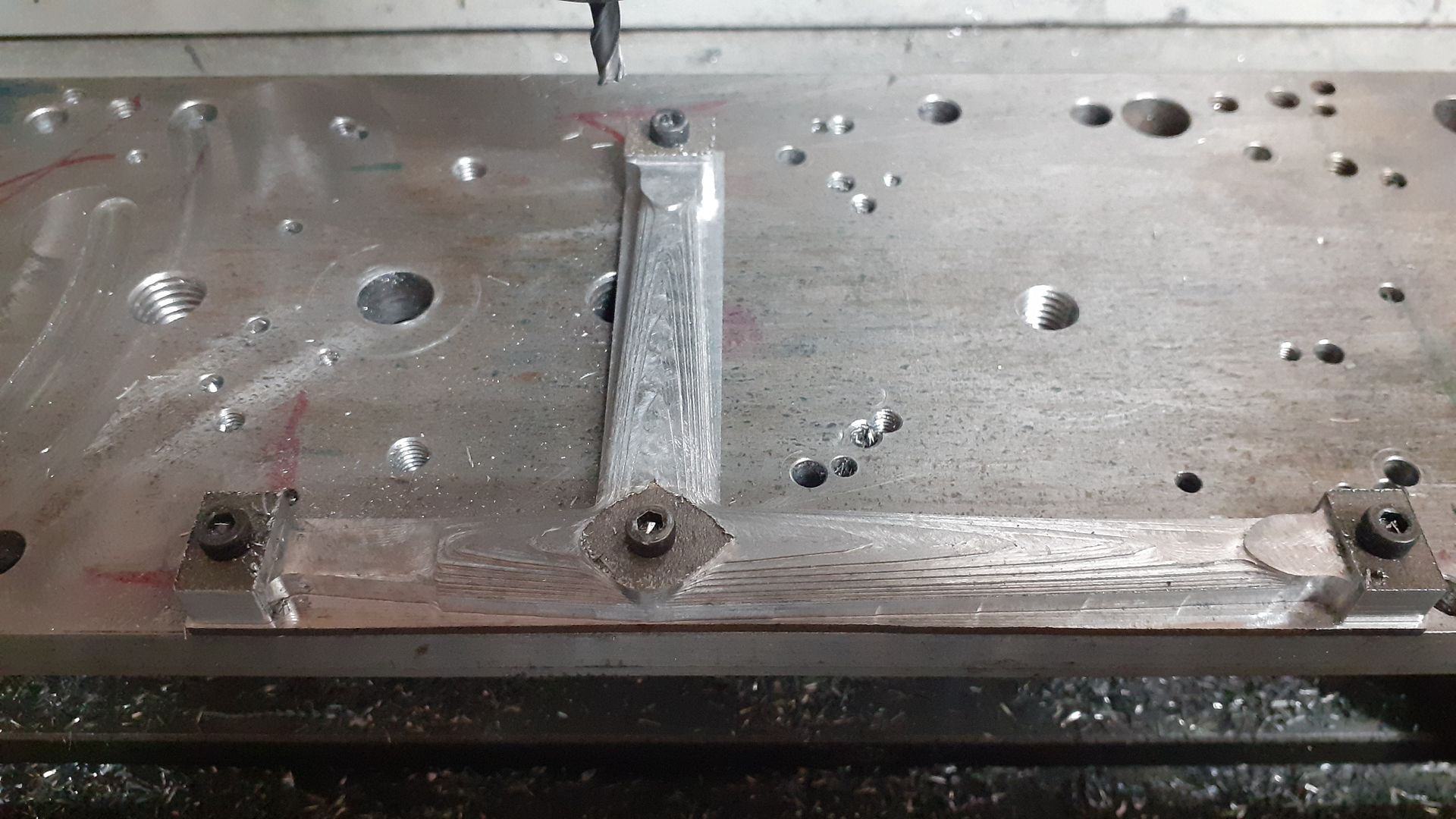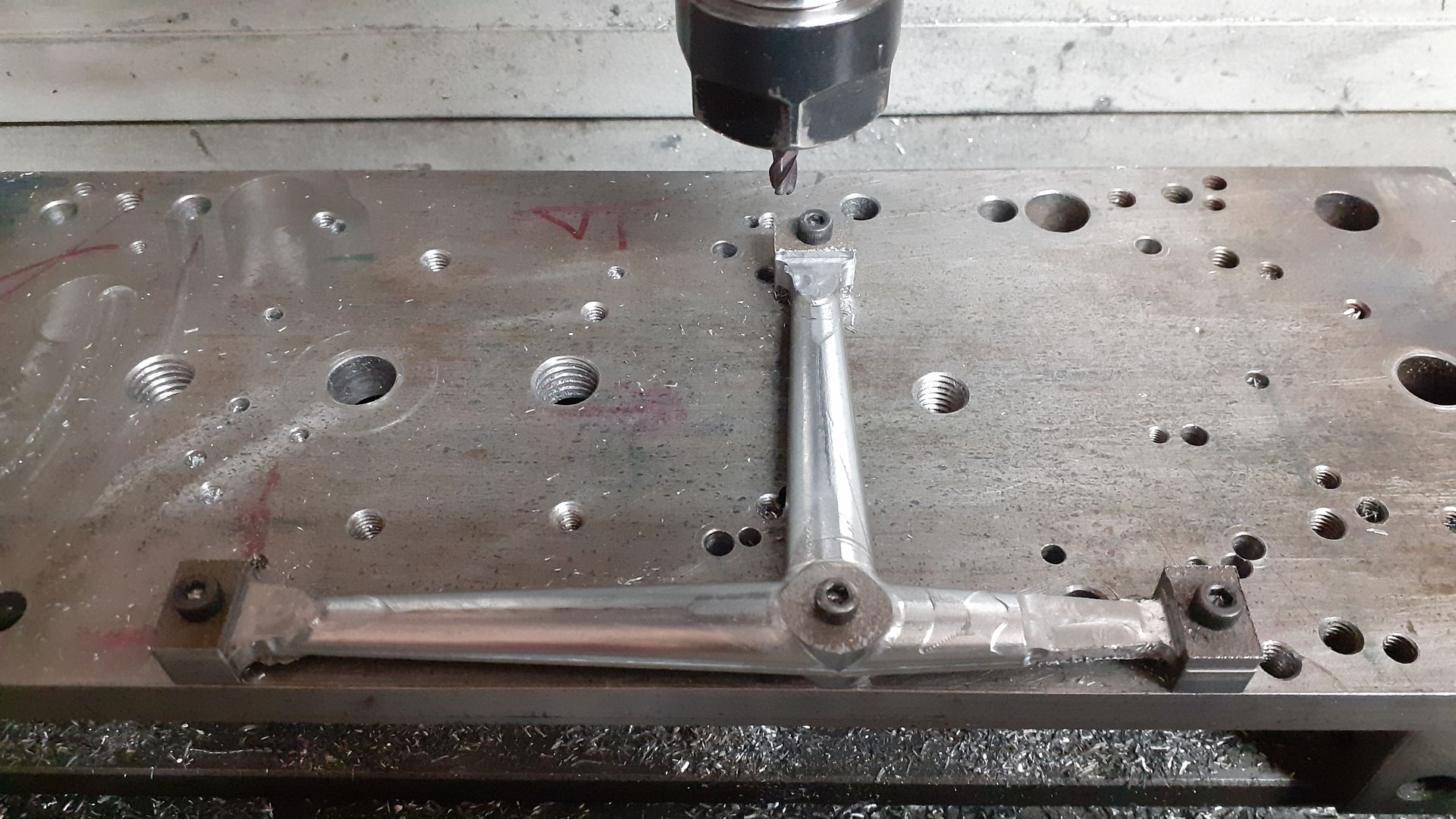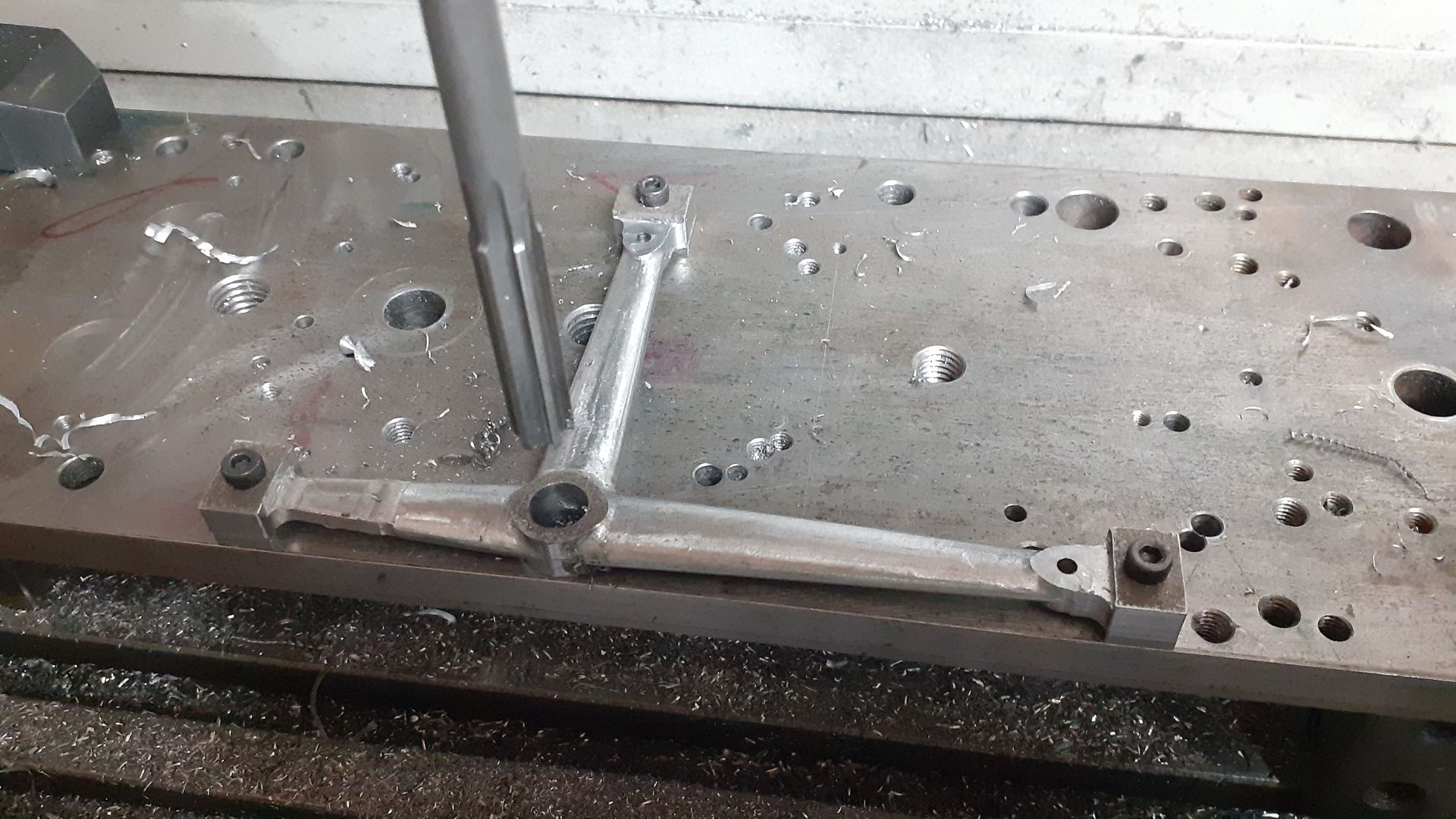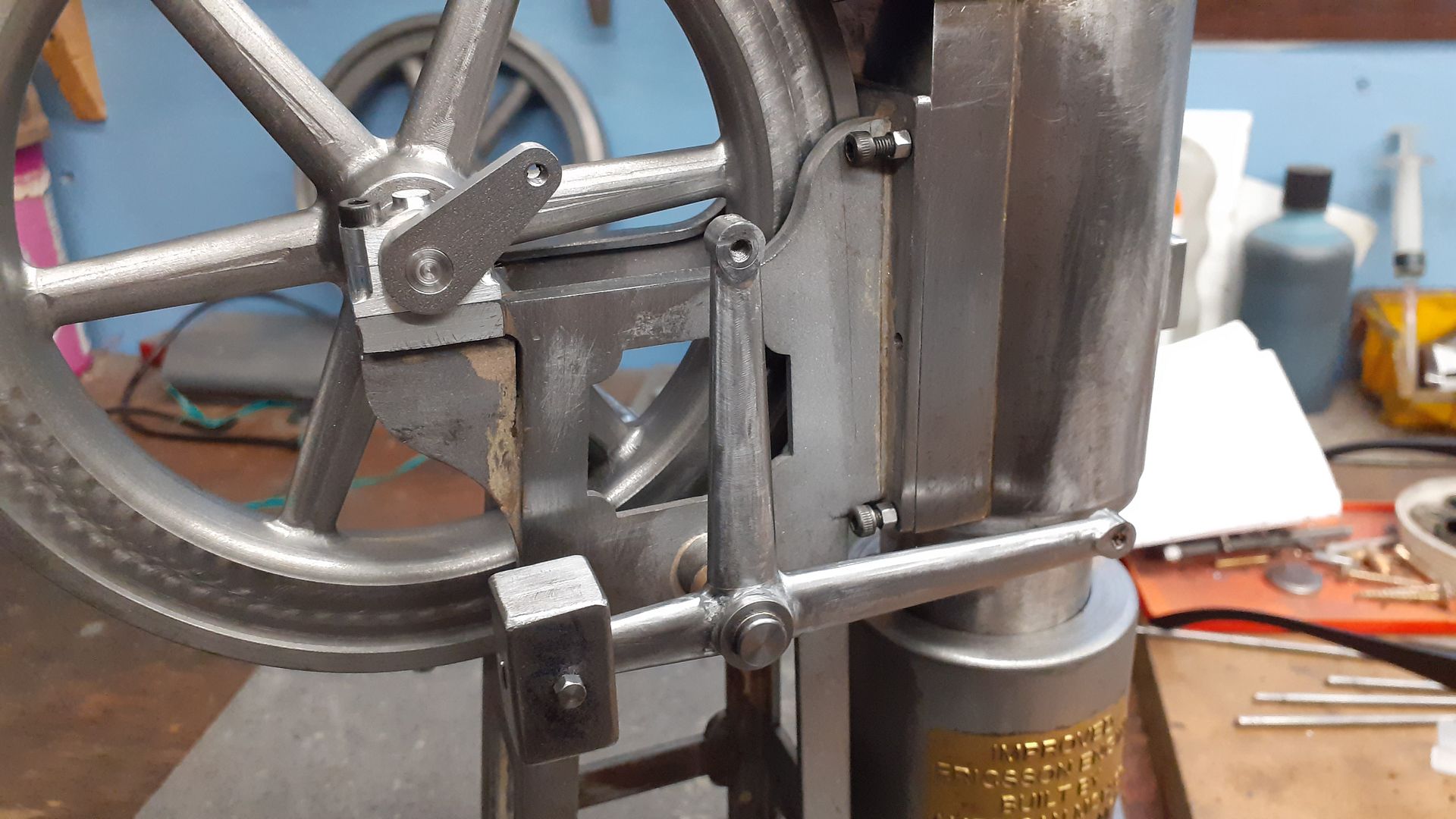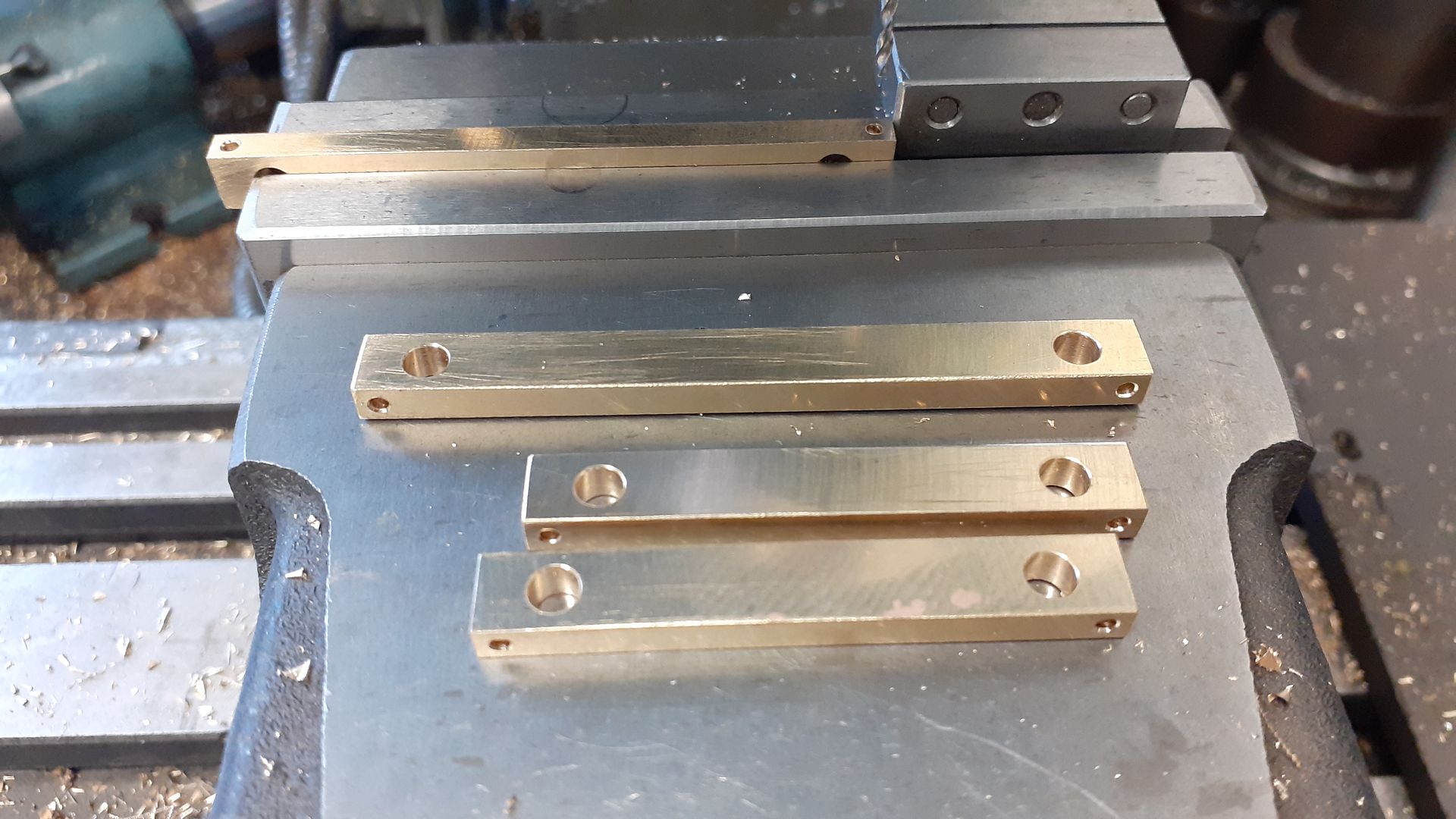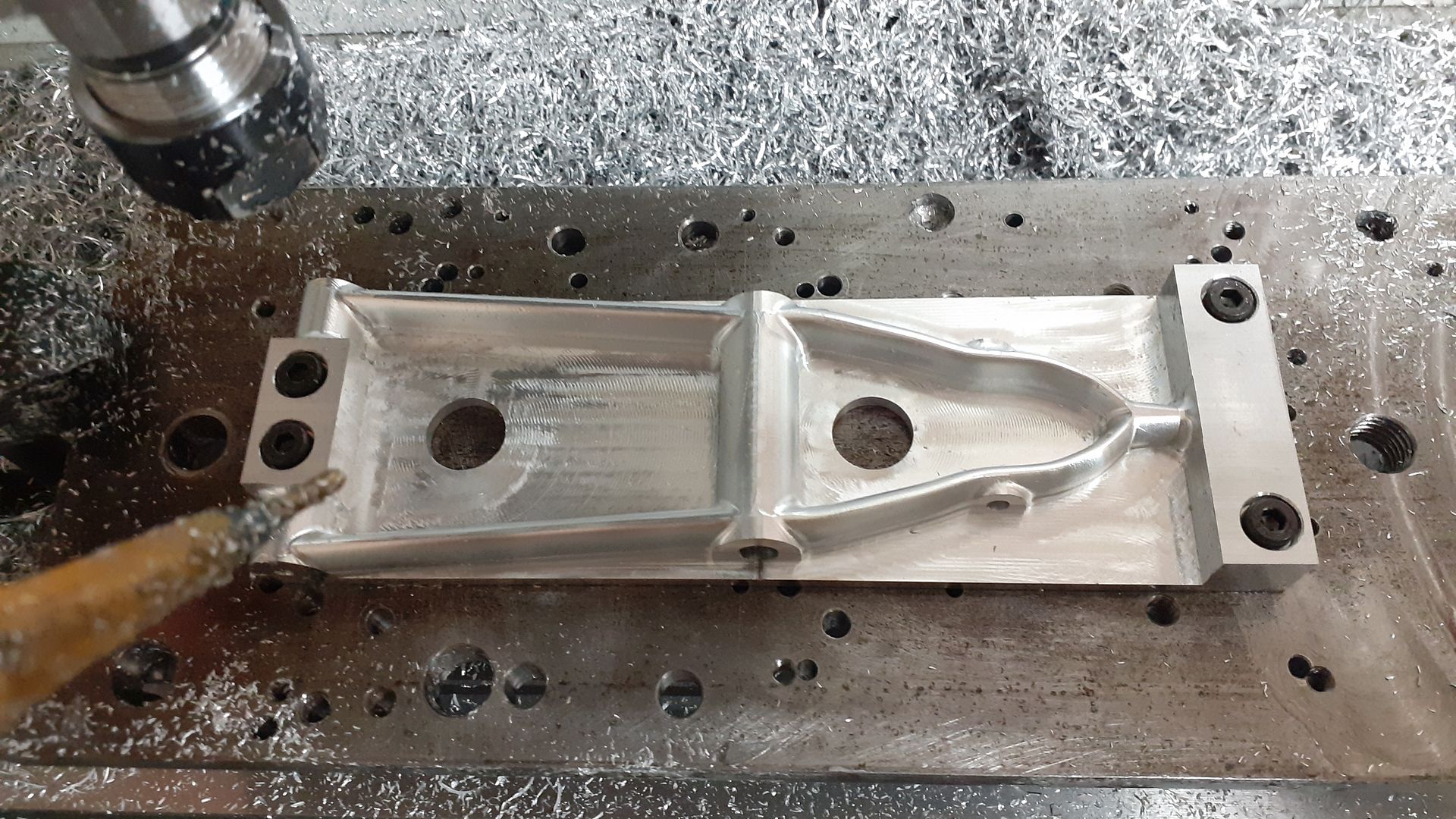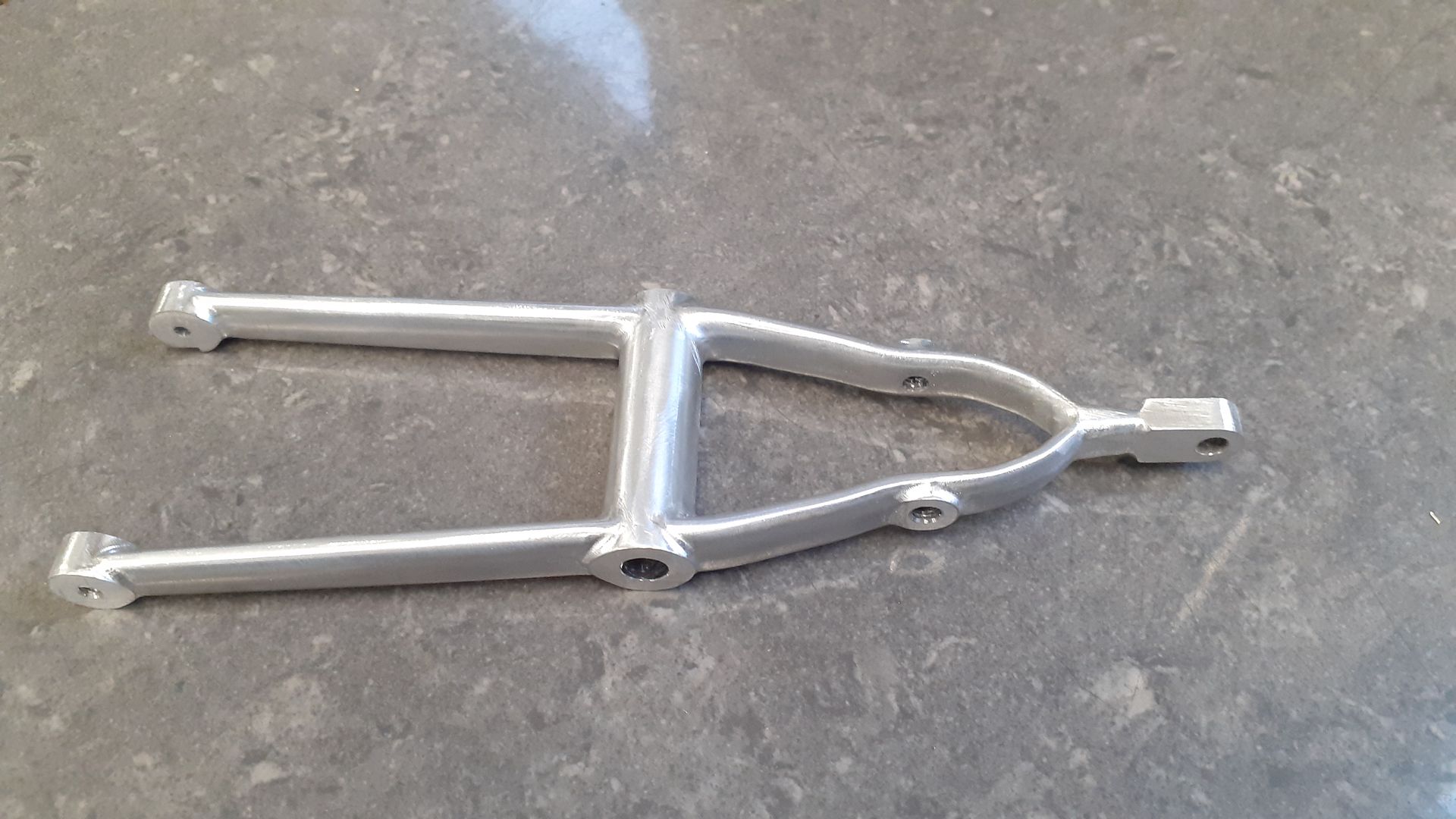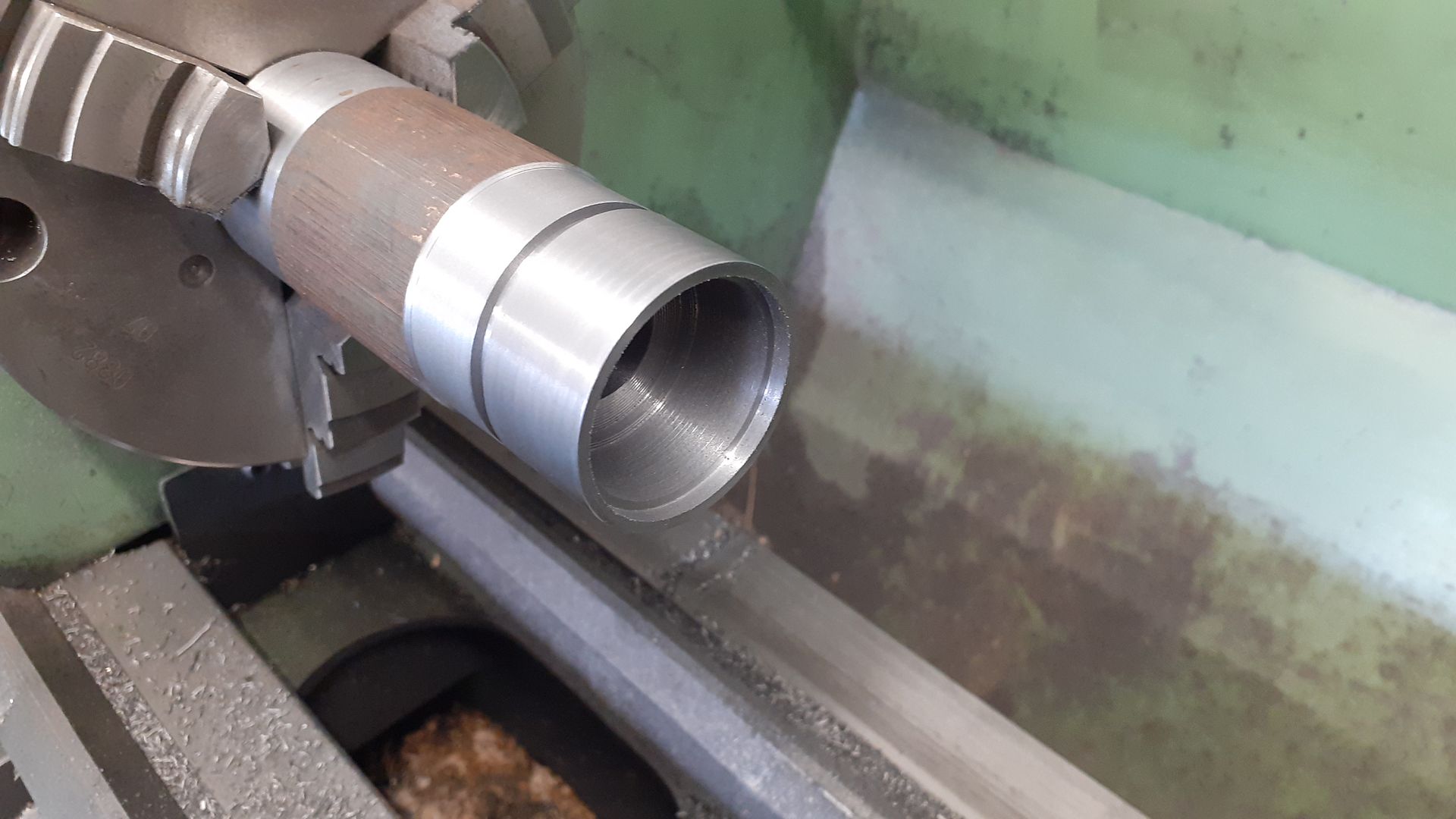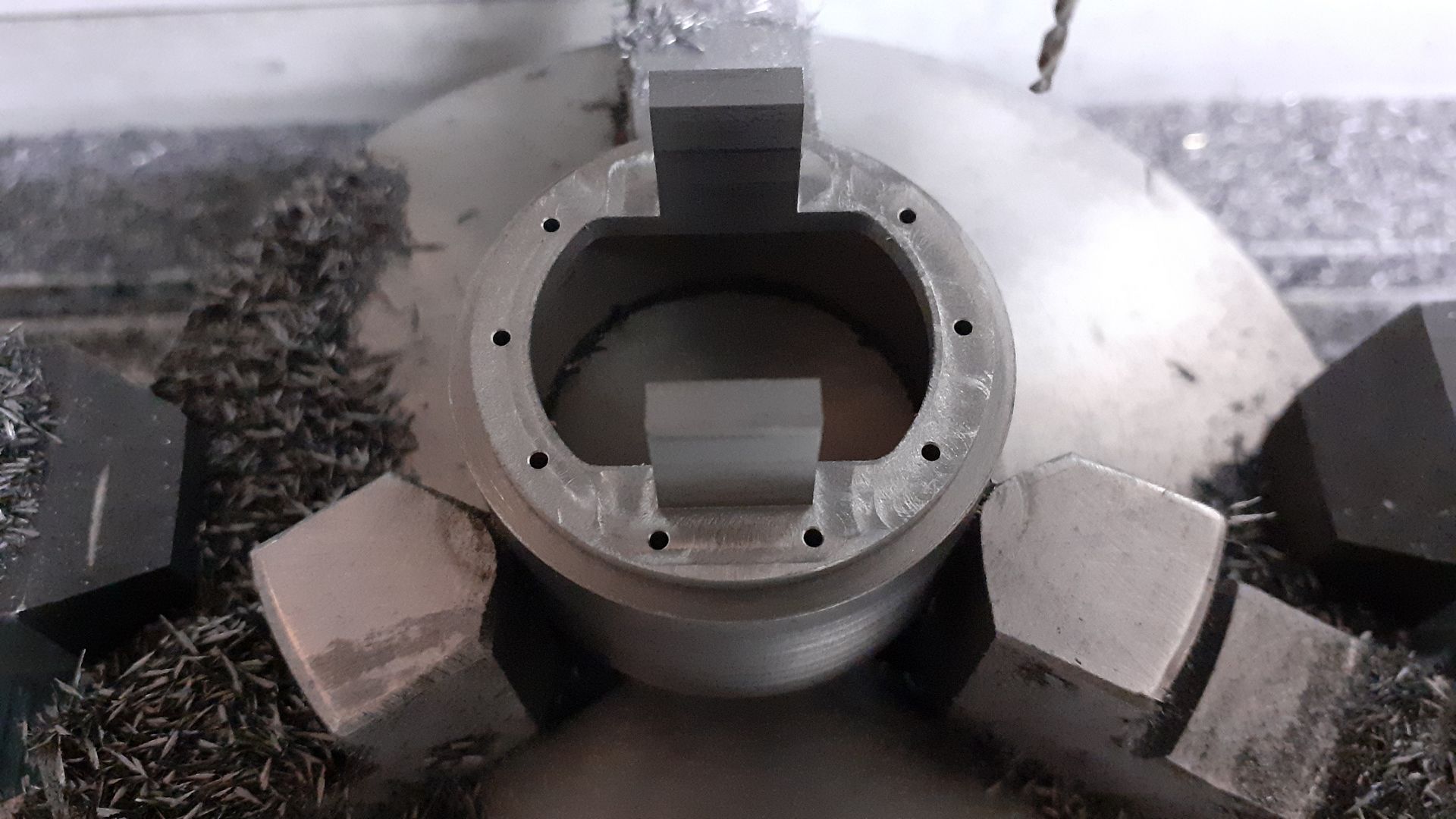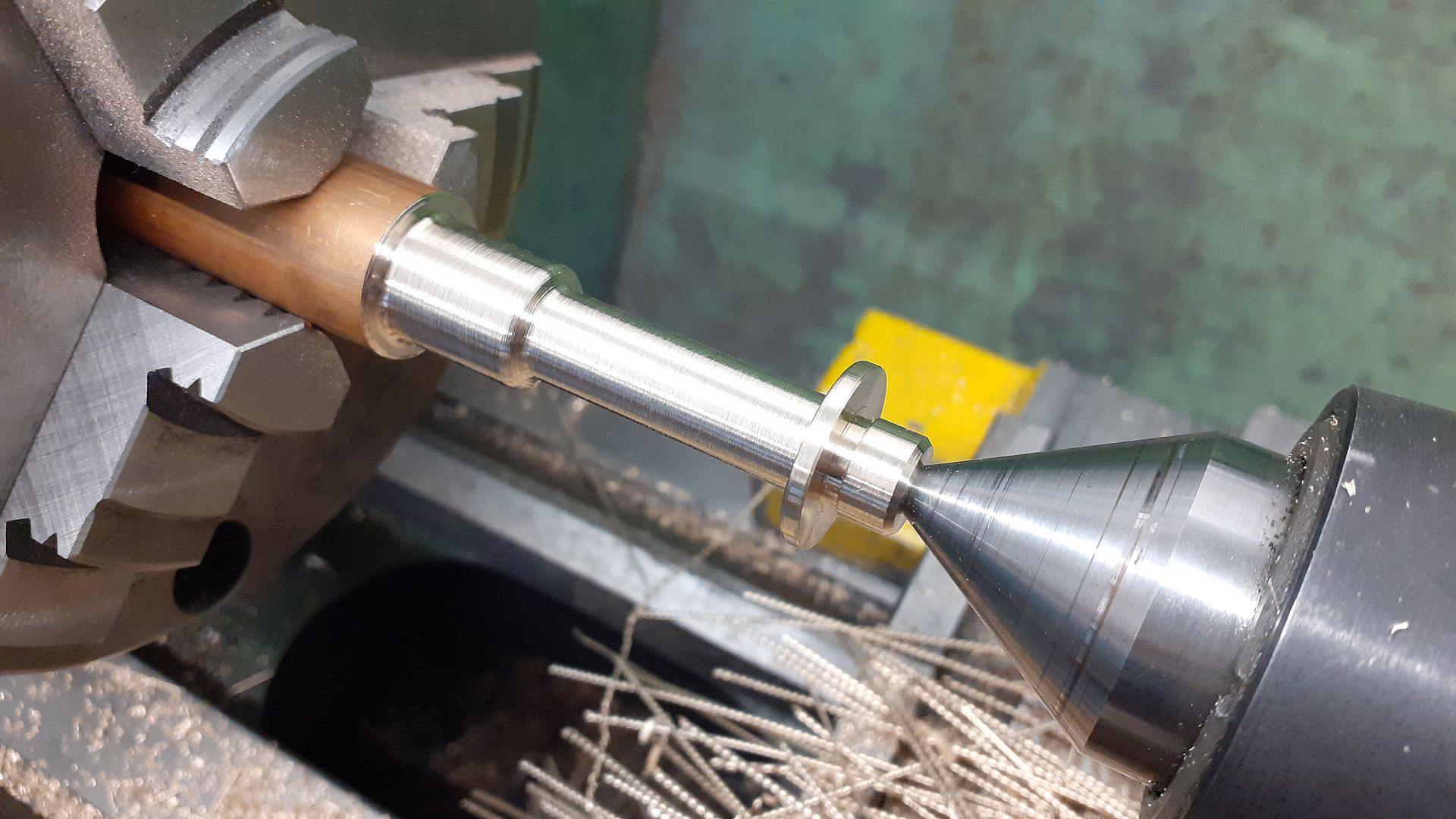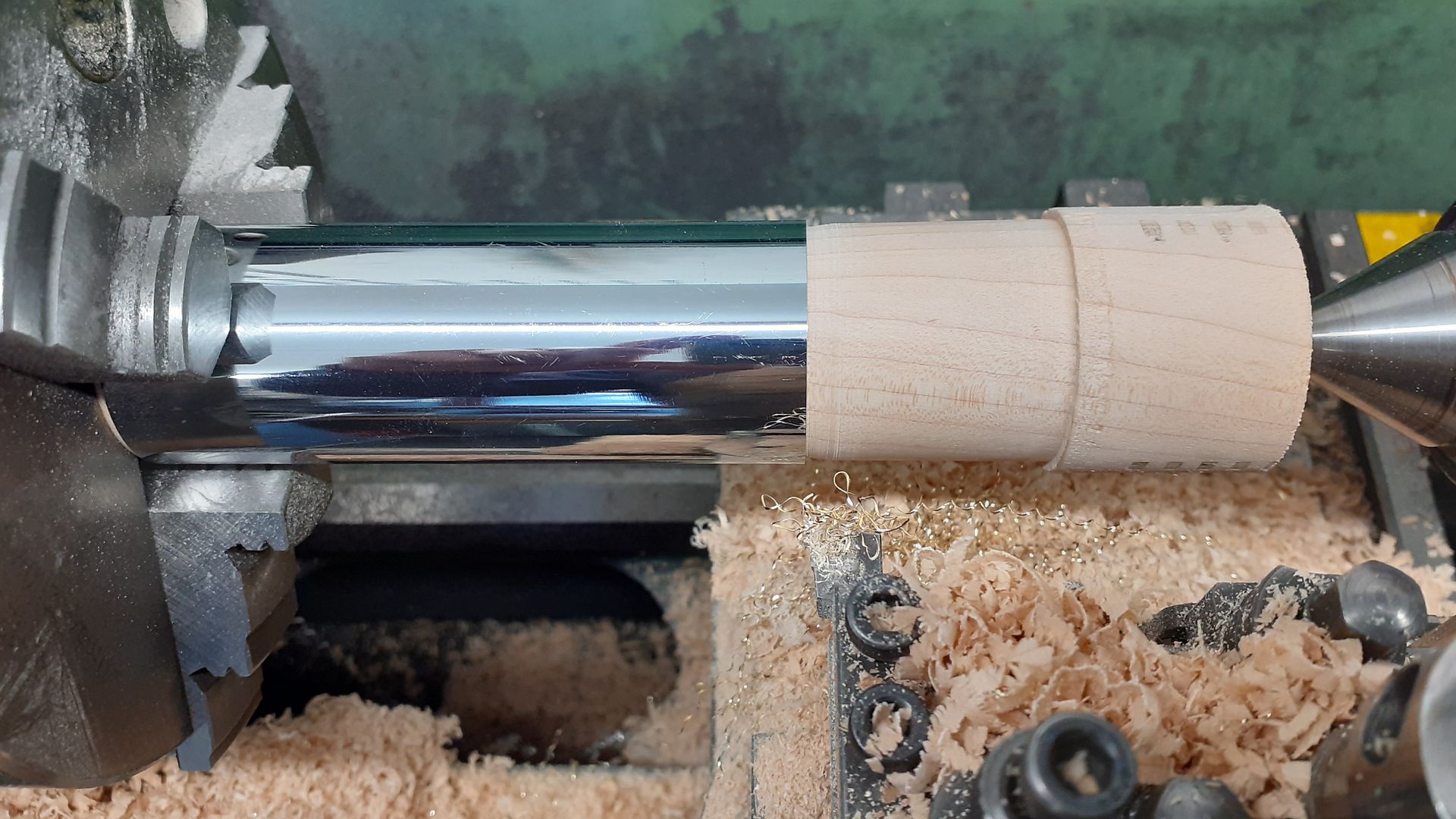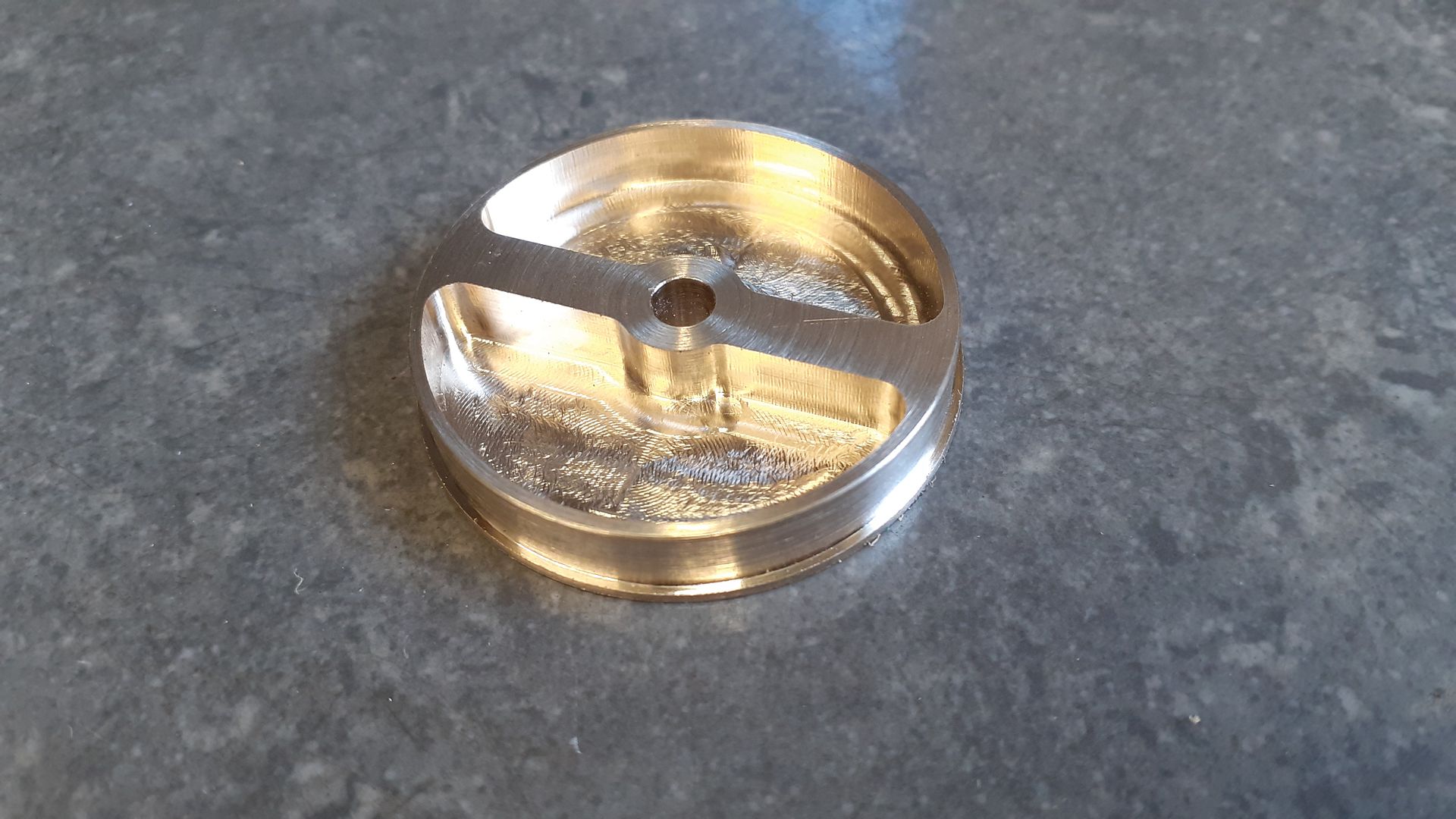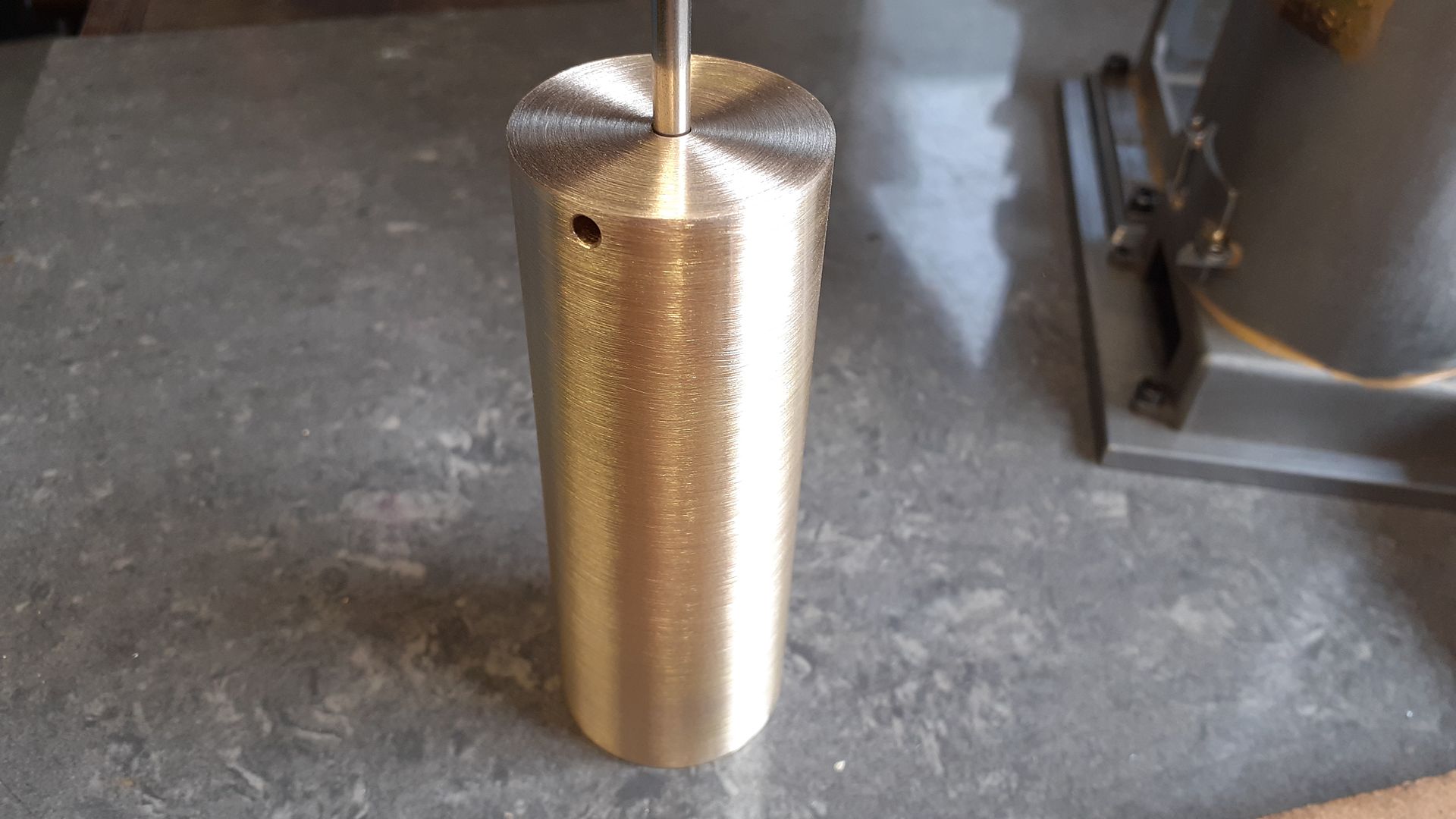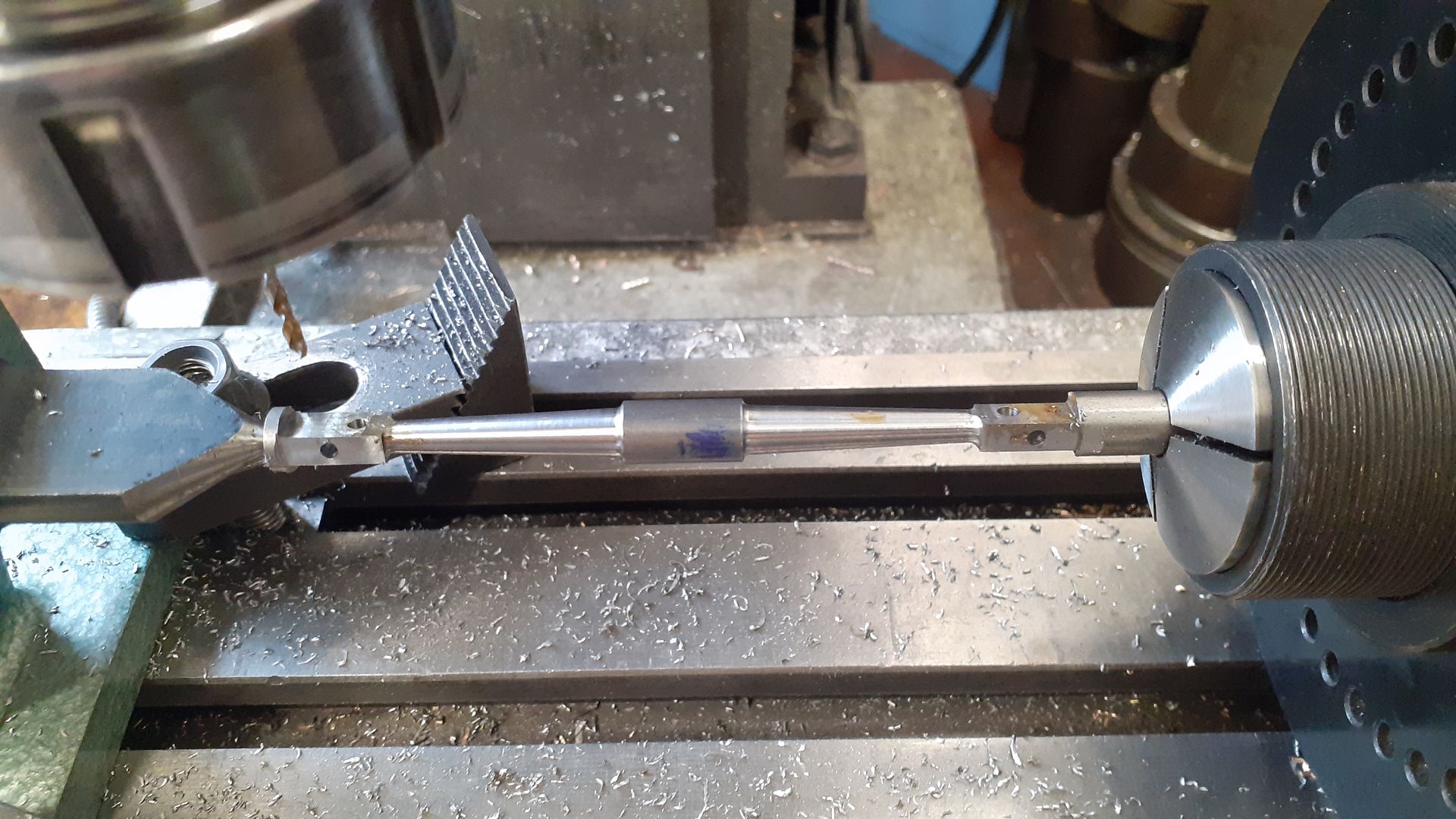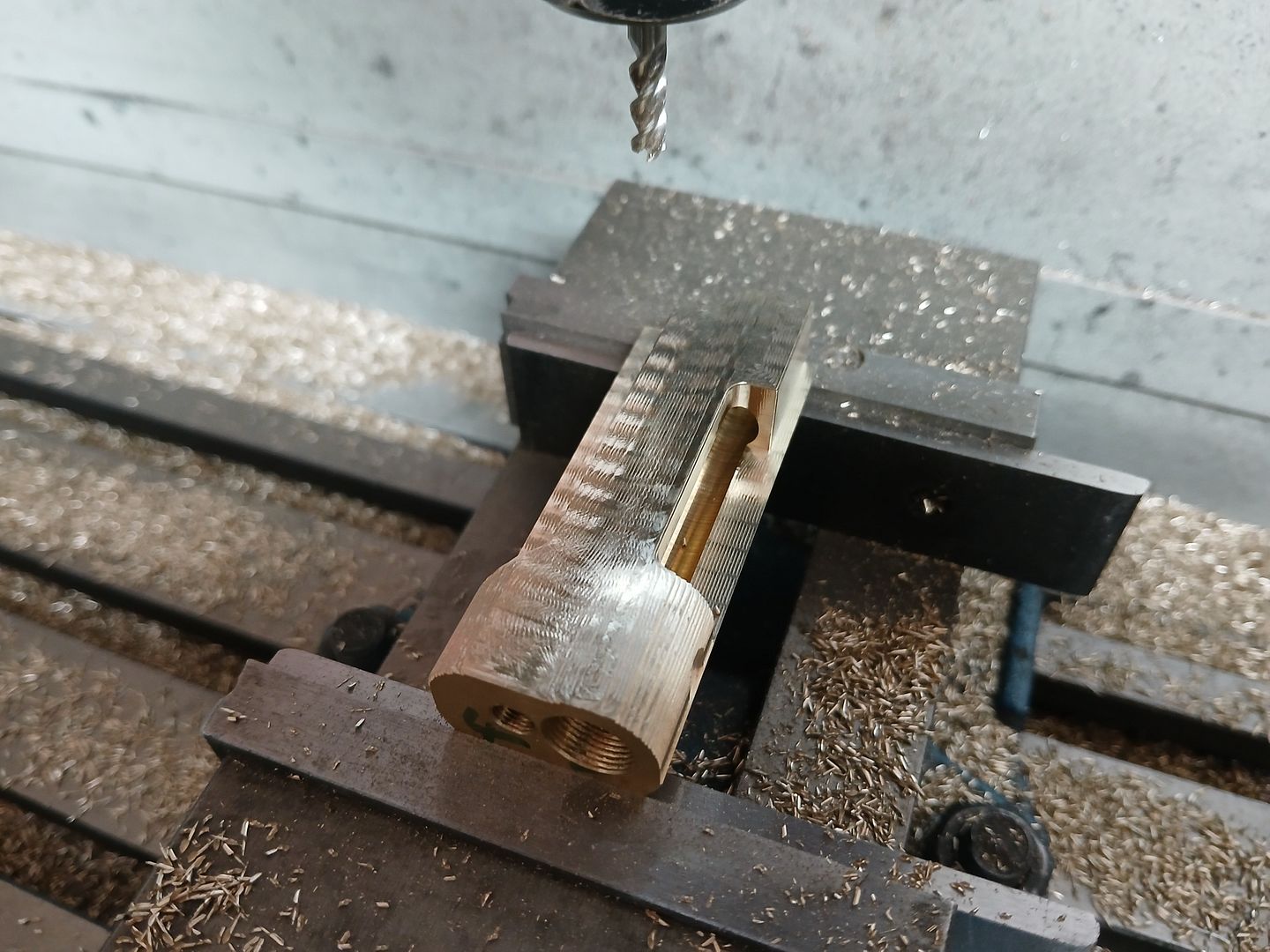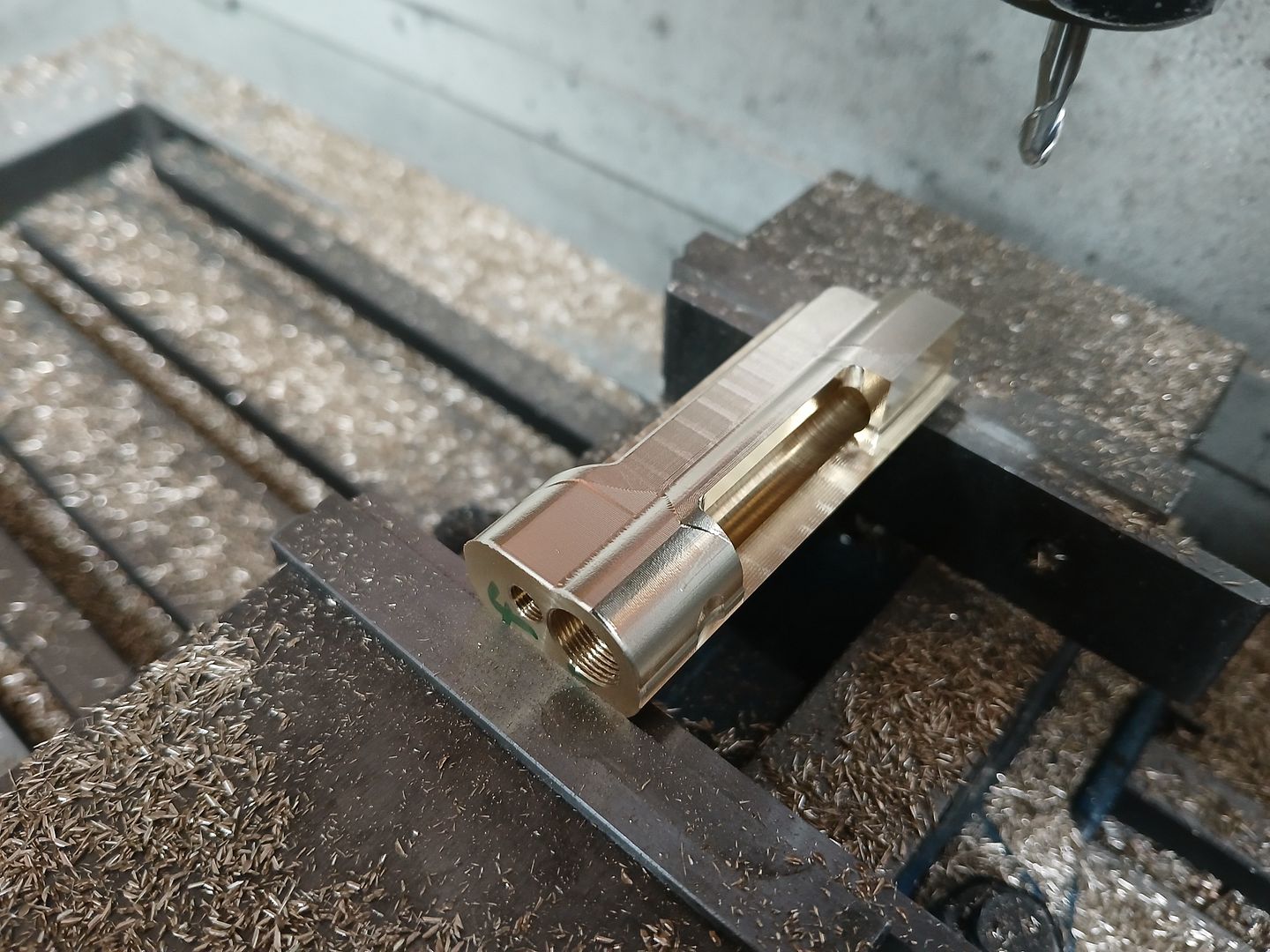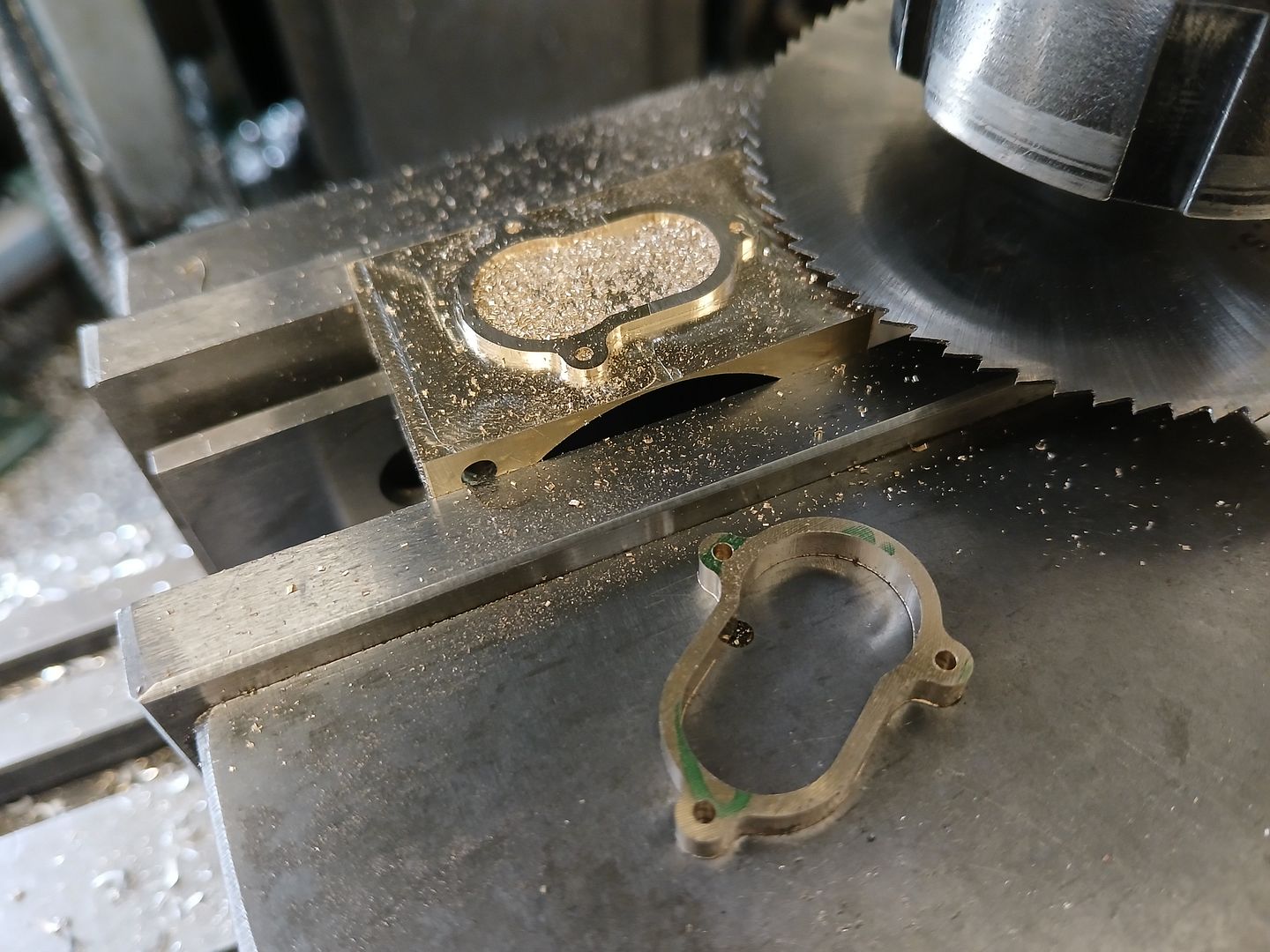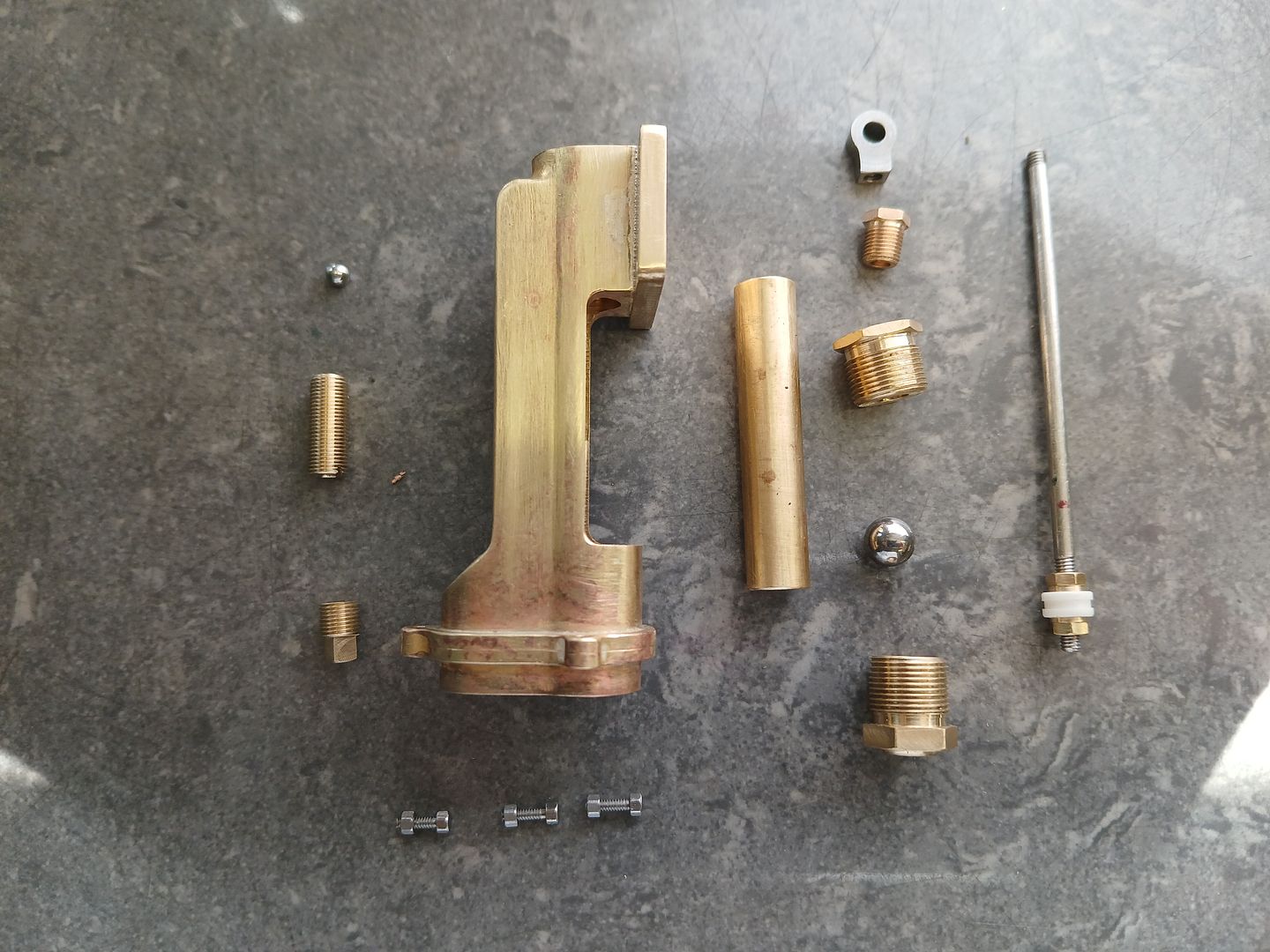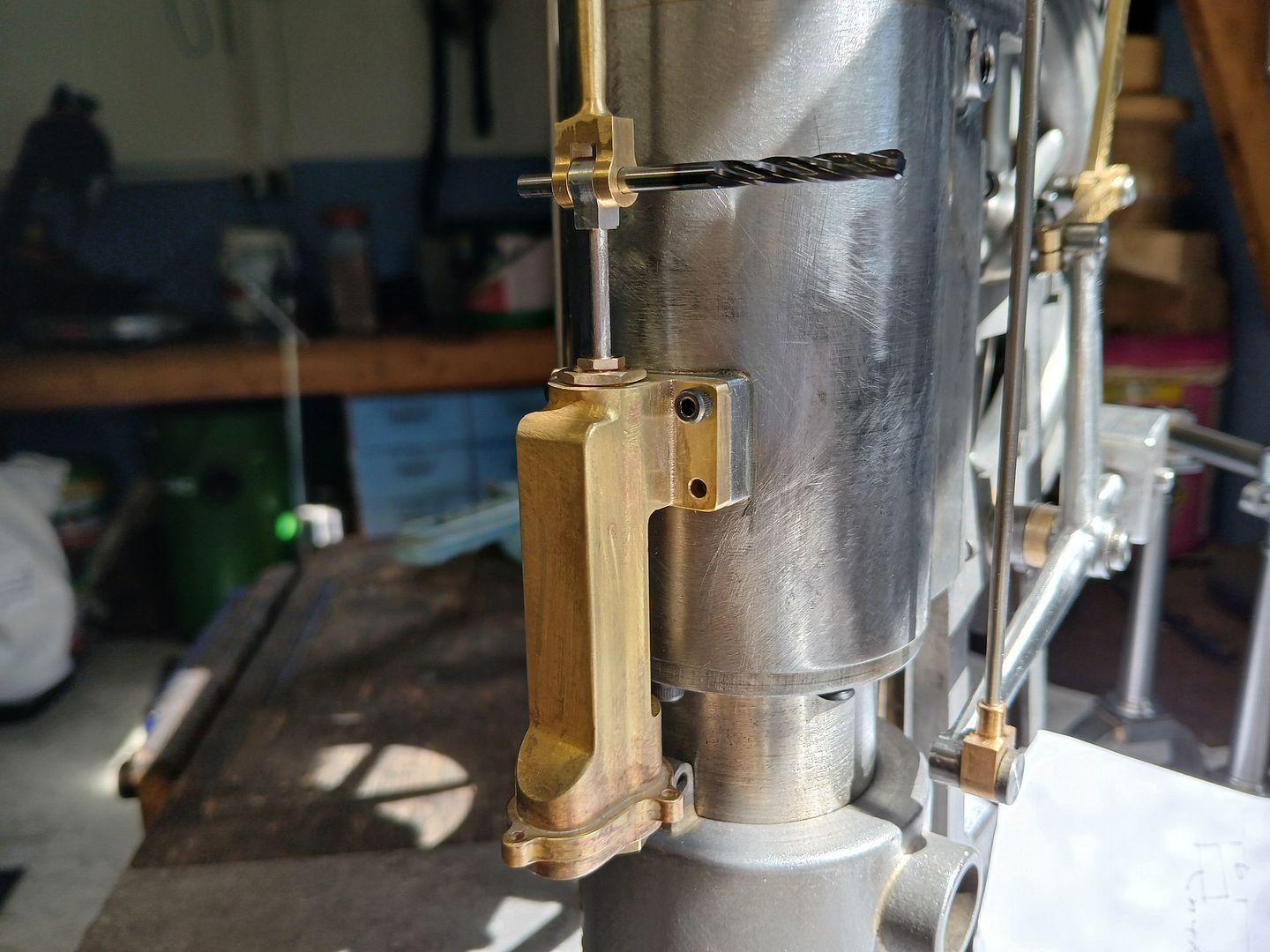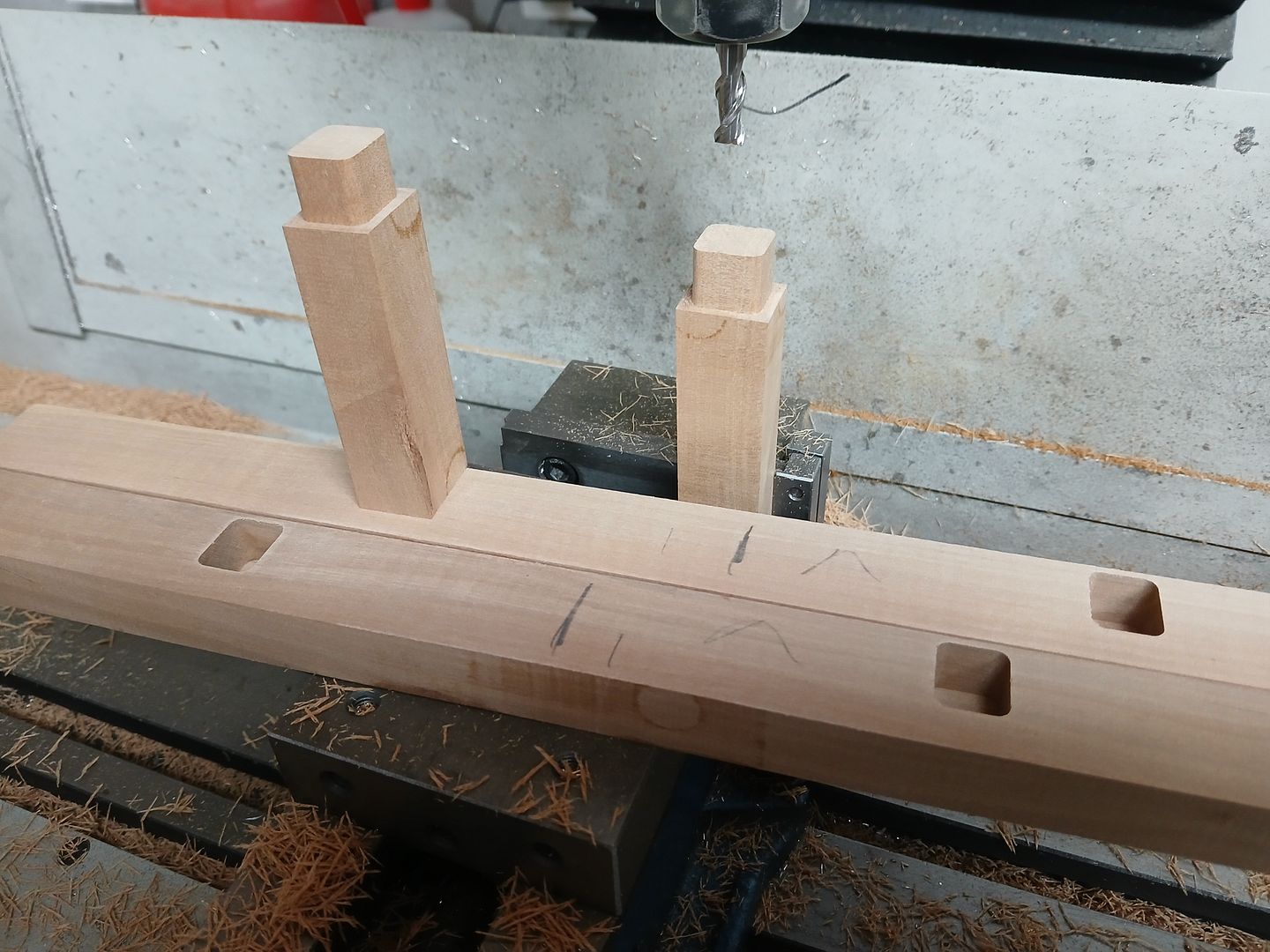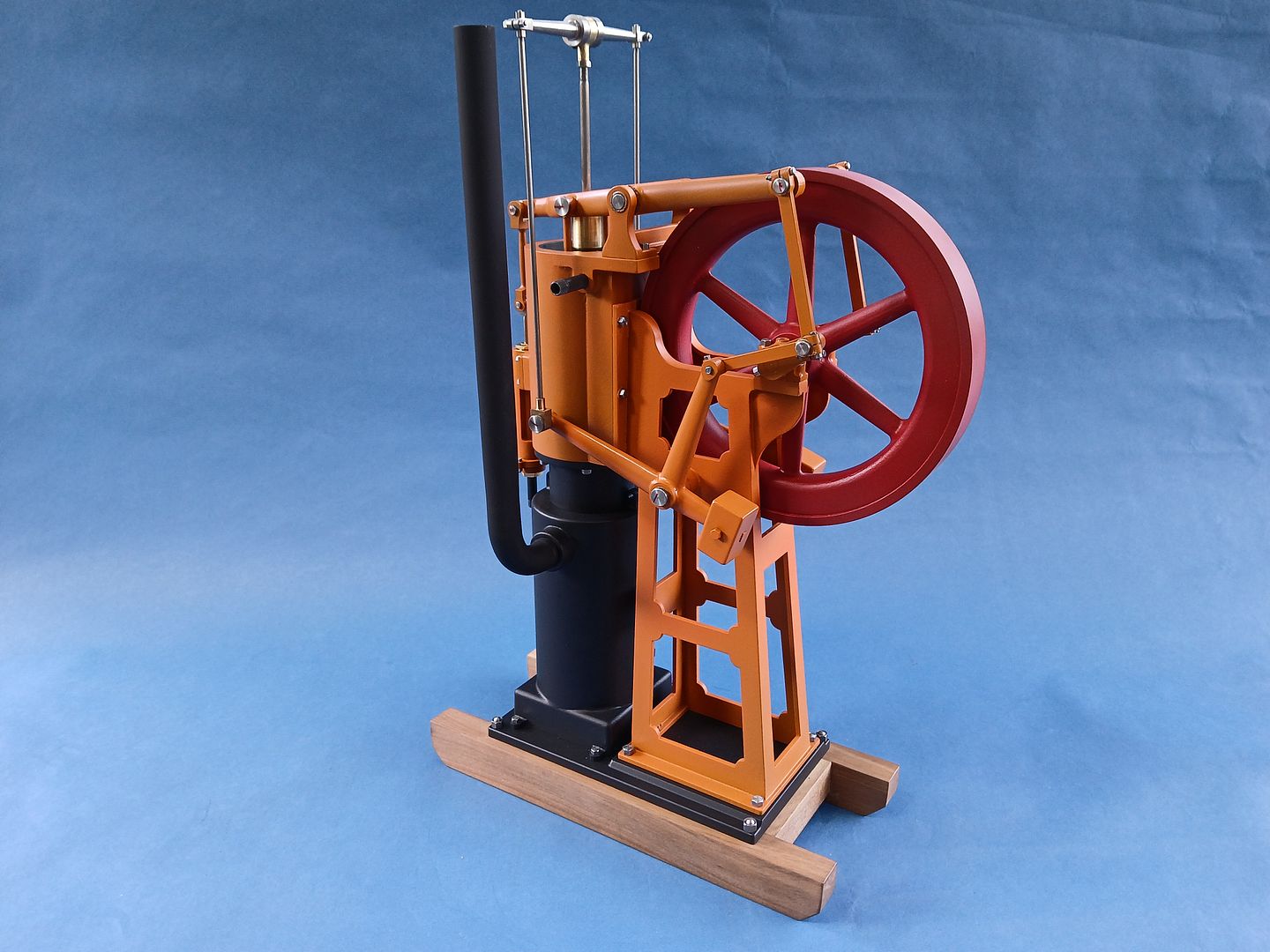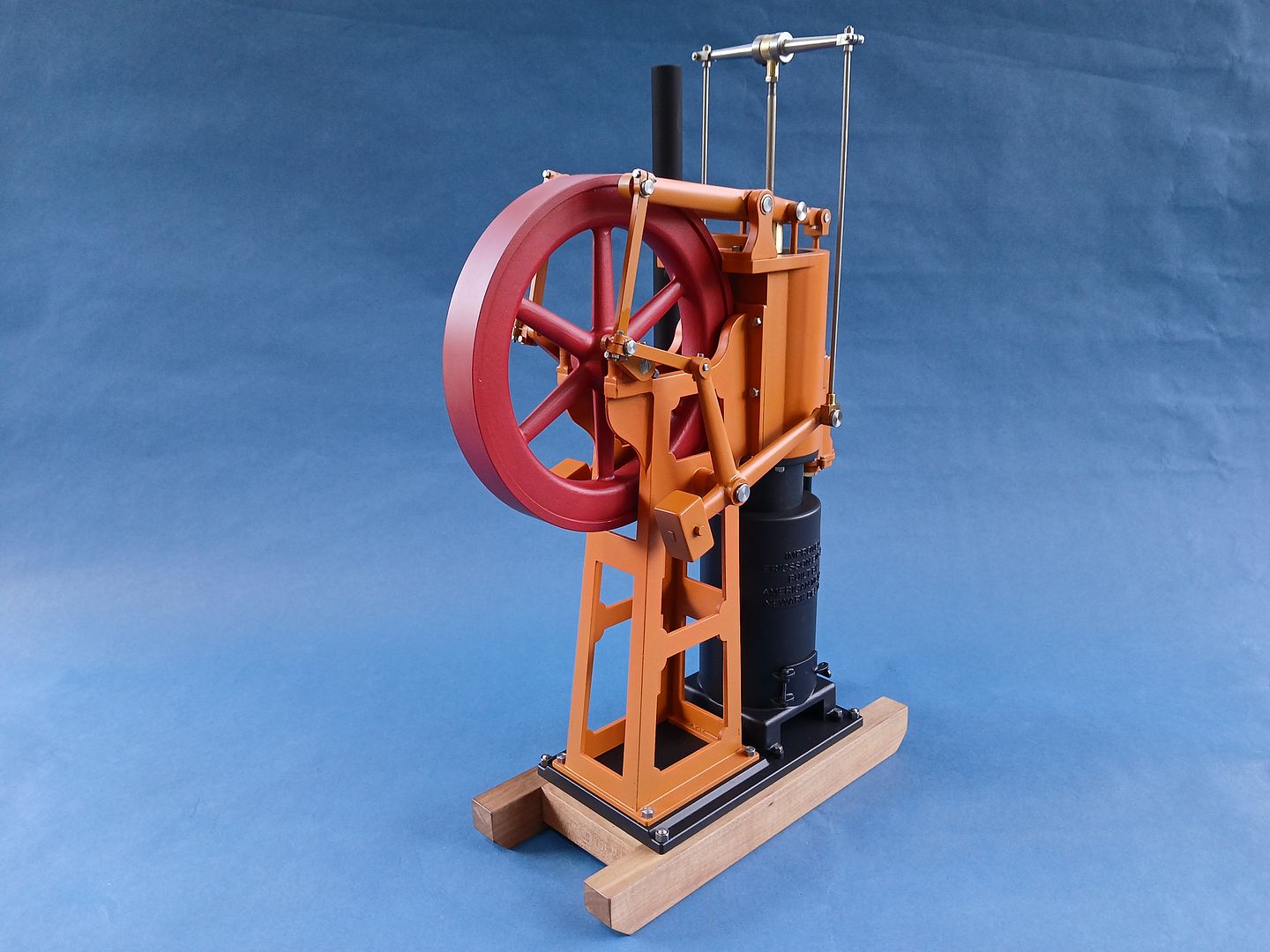Thanks, all the bits could be carved out manually but the CNC does help to simplify things once you have learnt how to use it and come up with teh CAD in the first place.
The piston started life as some 45mm continuous cast bar, I turned the OD to fit the previously machined liner and cut a groove where the piston packing goes leaving material beyond that to form the upper link lugs from. Like the Heinrici rather than trying to hollow out the piston from above I removed most of the material from below and created a shallow recess that a disc of cast iron could be pressed into to form the bottom of the piston.

The CNC was then taken advantage of to machine the top flange of the piston with its two flats and leave the lugs standing proud. I also did the eight holes that are used to hold the packing retaining right at the same time though they were tapped by hand. After this photo the lugs were drilled and tapped for pivot pins and then the ends rounded over.

The packing retaining ring is just a simple turned steel “washer” with some holes. I’m not sure whether I will bother with any form of piston ring/packing as if the piston fit is good I’d rather have the lower friction and just run iron on iron. I will decide after test running.

As the displacer rod has to pass through the power piston it needs a sleeve and gland, this is the sleeve being turned, the diameter closest to the tailstock ctr will have a fine thread cut onto it which will hold the sleeve’s flange against the bottom of the piston with a lock nut the other end will be opened out and threaded for the gland nut. There is a 4mm dia reamed hole through the whole length. Again may not need any gland packing.

The gland nut is straightforward turning, threading drilling, reaming then mill the hex before parting off.

The displacer started out as some brass waste pipe, something like 0.35mm wall (0.015″) so I turned a scrap of maple to a tight fit and used that to support the tube while I held it in the 3-jaw to square off the ends. I also held it like this to Emery Coth the chrome off.

The bottom was just a piece of 1mm brass Sif Brazed in place but the top needed to be thicker to accommodate two grub screws so it’s position on the rod could be adjusted. To keep the weight down I hollowed out most of this part just leaving two ribs where the grub screws would go.

After silver soldering the top on it was given a clean up and the two holes for the grub screws drilled and tapped

The yoke that lifts the displacer via two smaller rods that come up from the Tee shaped arms was turned and then held in the indexer to mill the ends to rectangular section and add some holes. After that the ends were rounded over and slotted so the outer bolts can be used to clamp the yoke to the rods.

 JasonB.
JasonB.






